Stainless Steel Cabinet with fully integrated sink on Left. 1500 x 610 x 900mm high
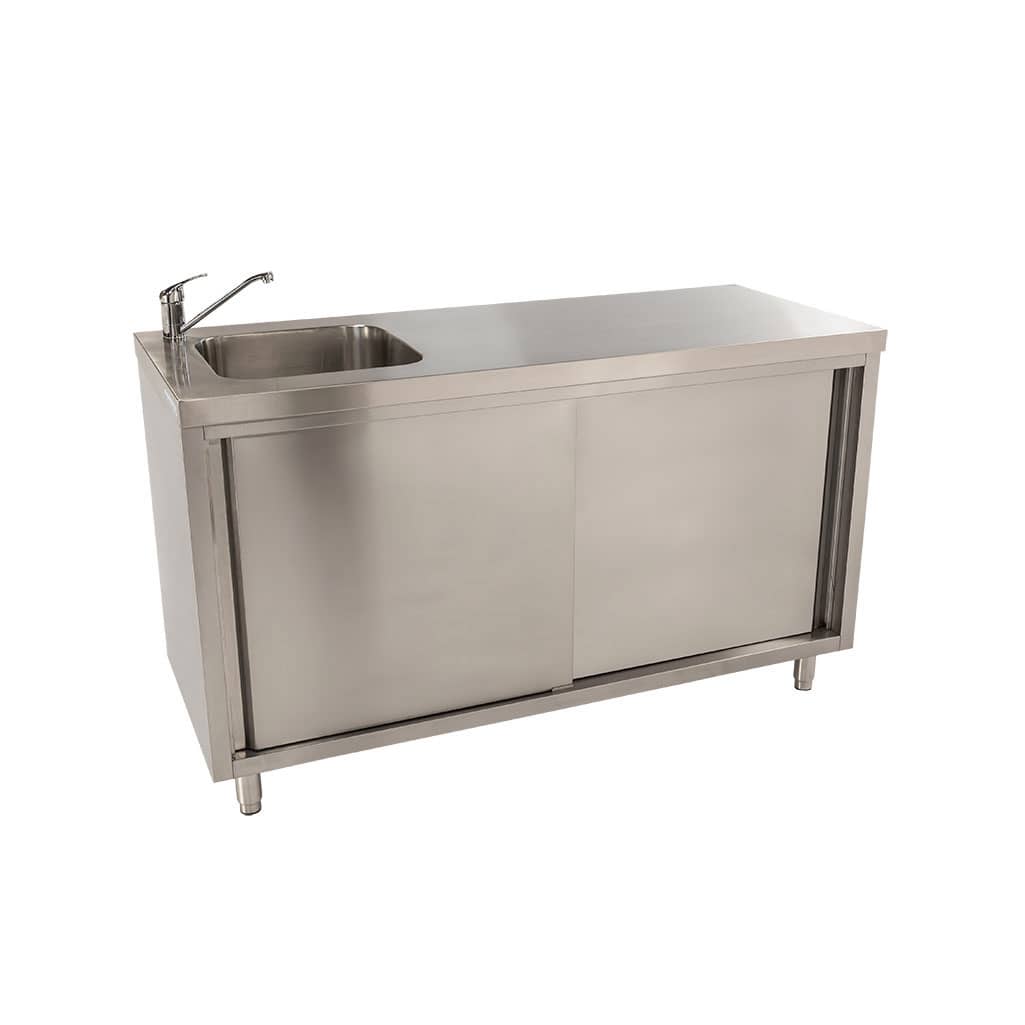
Commercial grade stainless steel Benches, Sinks and Shelves at everyday low prices.
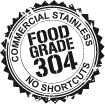

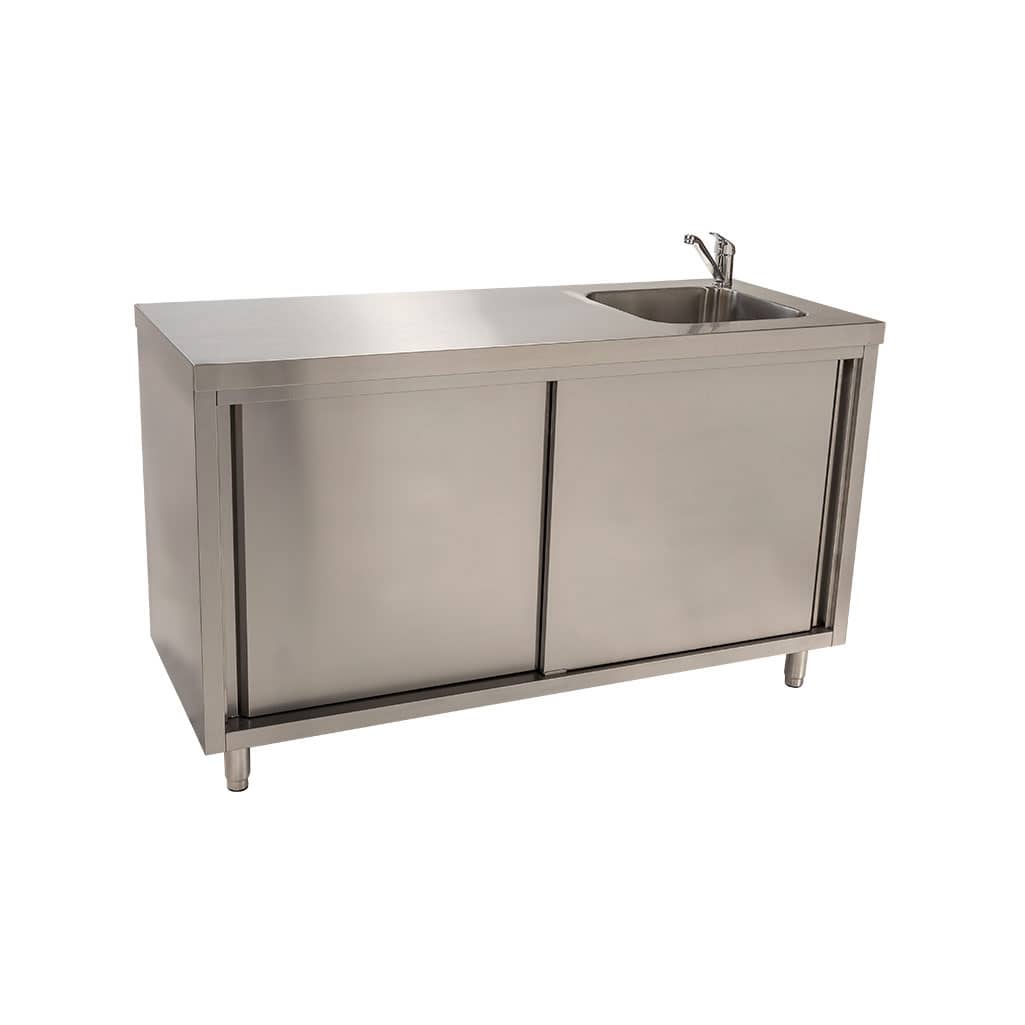

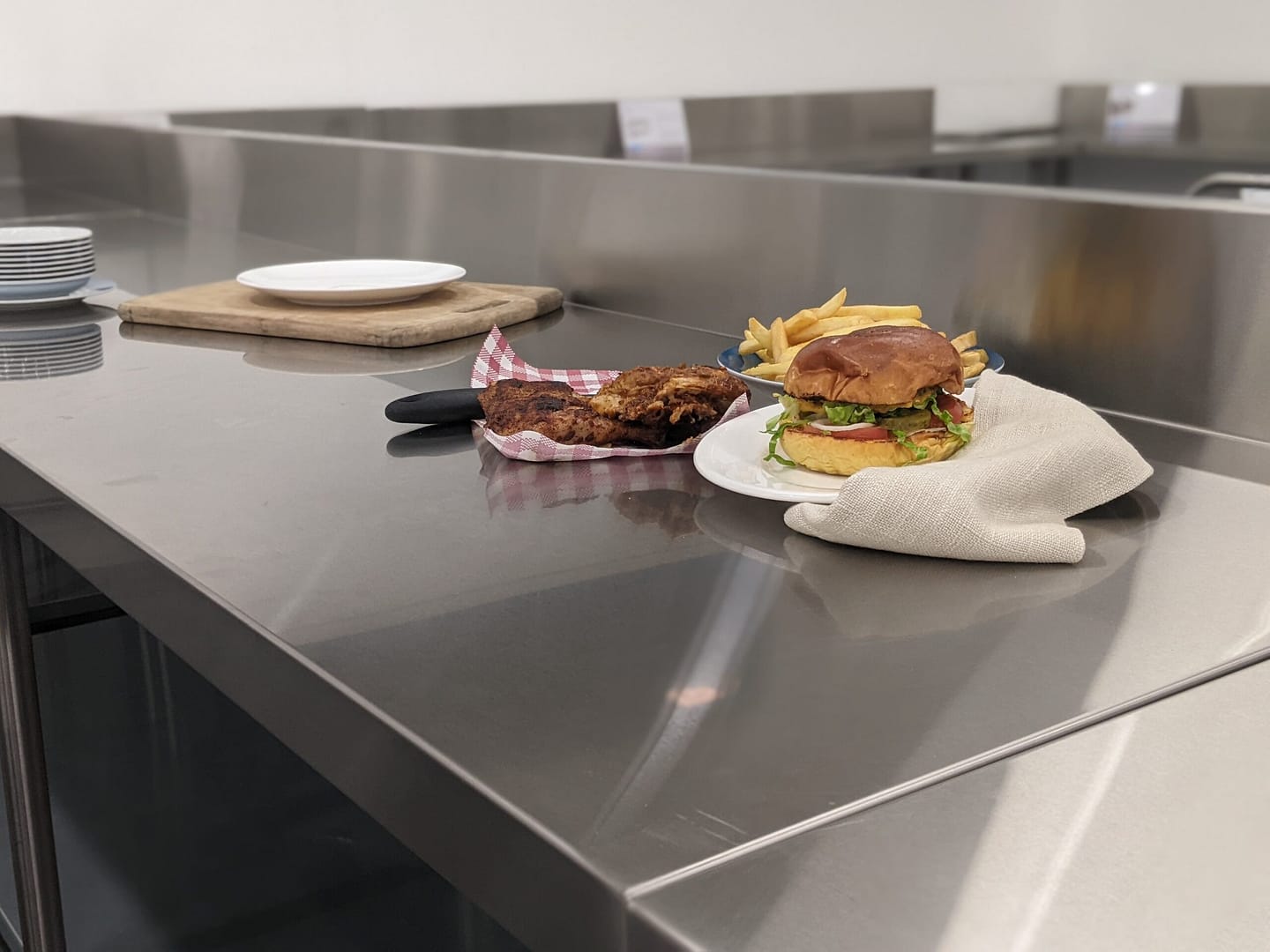
A common question: what is 304 stainless steel? Let’s dive into the world of this metal without getting too scientific. Imagine this: if stainless steel were a family, 304 would be the overachiever everyone talks about at family gatherings.
Known as 18/8 steel, this mix is not just any old blend. It’s the perfect cocktail of at least 18% chromium and 8% nickel content, whipping up a concoction of qualities that make it the gold standard.
304 stainless steel is the full package: high tensile strength, beauty, and a personality that makes it a hit in any setting. What is 304 stainless steel’s superpower? Here’s what it brings to the table:
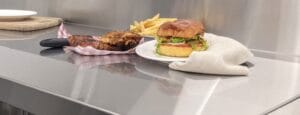
304 stainless steel’s chromium content makes it amazingly resistant to rust and oxidation. This means it can take on a wide variety of acidic foods, cleaners, and even the odd splash of vinegar or lemon juice like a champ. So, if you’re setting up shop in a busy kitchen, 304 is your go-to pal for counters that stay shiny and new, even when the going gets tough.
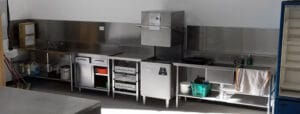 Strength and durability? 304 stainless steel has them in spades. This stuff is tough enough to handle the hustle and bustle of commercial kitchens without breaking a sweat. Think of it as the kitchen warrior that won’t dent or give up on you when you accidentally drop that heavy pot. It’s built to last, making it a wise investment for any serious kitchen setup.
Strength and durability? 304 stainless steel has them in spades. This stuff is tough enough to handle the hustle and bustle of commercial kitchens without breaking a sweat. Think of it as the kitchen warrior that won’t dent or give up on you when you accidentally drop that heavy pot. It’s built to last, making it a wise investment for any serious kitchen setup.
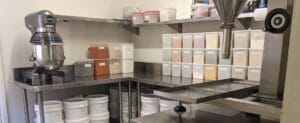
Let’s talk about cleanliness, because in a kitchen, hygiene is non-negotiable. The non-porous surface of 304 stainless steel means bacteria and germs have nowhere to hide. A quick swipe with soap and water, and you’re good to go, keeping your kitchen spotless and your food safe.
Being the ultimate food grade surface, 304 stainless steel can be found in every corner of our world, from the most intricate surgery tools to the bench you relax on at the park, proving time and again why it’s the MVP of metals.
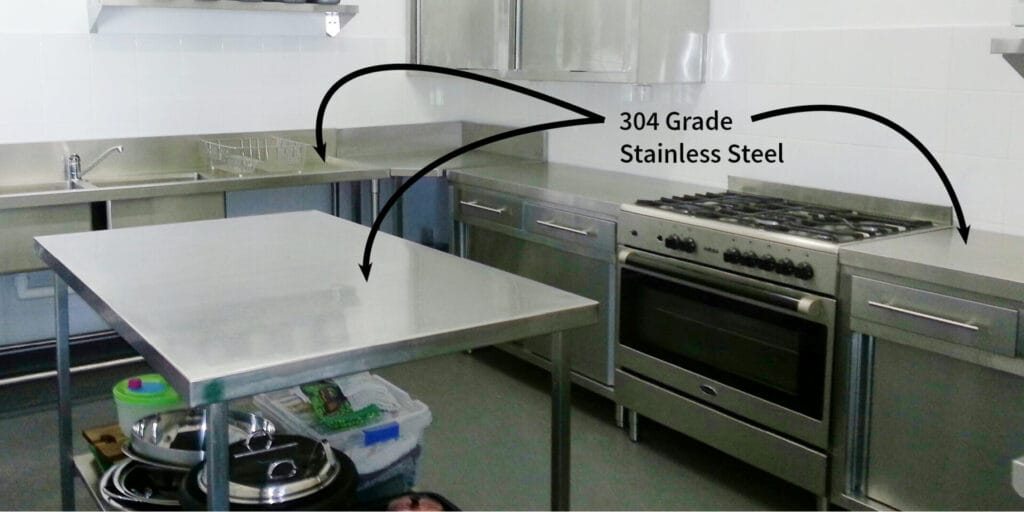
When comparing 304 and 430 stainless steel, it’s easy to see that their different properties make them best suited for different applications.
304 stainless steel is the more popular & durable of the two, higher in chromium (17.5% to 19.5%) and nickel (8% to 10%). This gives it some serious strength and durability, as well as giving it a higher resistance to corroding. If you need a steel to stand firm in a commercial kitchen where food hygiene is essential, this is the one you want in your corner, like a tough bodyguard.
430 stainless steel, on the other hand, is almost on par with chromium content (17%) but has almost no nickel in it at all (0 to 0.75%). It can handle mild corrosion, and it’s a good bit less expensive than 304.
But… It doesn’t quite have the same staying power and is a porous surface, so not recommended for food preparation in a commercial kitchen.
The perfect steel for you depends on where you’re using it. Need a tough, almost indestructible steel to handle food processing, medical equipment or just high hygiene environment? You can’t go wrong with 304. Want something that’ll thrive in a less harsh environment, like indoors, at home or in non-food environments? 430 should be just fine.
Want to play detective with your stainless steel grade? Here’s a fun party trick: grab a magnet. If it sticks, you’re likely dealing with a lesser grade, perhaps even the notorious 430. But if that magnet falls right off, give yourself a pat on the back; you’ve got high-quality 304 stainless steel.
At Brayco, we’re all in on 304 stainless steel. That’s right—every bench, cabinet, shelf, and sink we offer is decked out in this premium metal. We’re throwing a stainless steel party, and you’re all invited.
Upgrade to 304 stainless steel today—your kitchen deserves the best! Say hello to unbeatable durability and hygiene. We’re here to help you every shiny step of the way.
Back to top: What Is 304 Stainless Steel?

Together, We Have Made a Truly Impressive Sandwich.
20 years ago, I ordered the first container of stainless steel benches and Brayco was born.
That container had 8 stainless benches in it, no sinks, just benches. When it arrived, I wasn’t disappointed with the quality, so I shoved a few ads in the local papers, and put up a few auctions on eBay to see how these few products would sell. Well, bugger me, the phones starting ringing and within 6 weeks, I was back ordering the second container. I drafted my brother in law Dan in to help sell them. This container had 15 products. I was going out on a limb now. Now we had some wall shelves and a single cabinet crammed in. What recklessness! My wife and a few of my friends started asking whether I would saturate the market.
Who would want that many stainless steel benches? Why are they so popular?
These are disturbing questions. When you’ve found something you like doing and it’s going well, you don’t like to think it’ll just fizzle out. The fun part of business is the growth. The connection with colleagues and customers. So, I started asking the customers why the hell they were buying so many benches from us. If I didn’t know the answer, maybe they would. Could we do even better? Could we grow?
The customers said it basically came down to 4 simple things:
1. Quality — the benches had to be good quality — sturdy, built for purpose and durable.
2. Price — we were priced well below the lazy competitors who’d been price gouging for decades.
3. Availability — customers liked being able to get their stuff same day, not wait for weeks.
4. Range — we had an OK range of sizes, but they would have bought more if we had more to offer.
So, armed with this knowledge, we decided to make sure we followed these 4 ideas. We call them the 4-Pillars.
And now, 20 years later, you can see the result.
• Those 8 products have turned into a mind boggling range of over 1,200 products. Benches, sinks, shelves, cabinets, chairs, tables, wheels, taps in a vast assortment of sizes, styles, materials. So, range is covered.
• In 2003, we had a 96 square metre warehouse in Perth. Pokey. Now, we have over 20,000 sqm of warehousing across Australia and New Zealand — we are available. Pick it up same day. Buy online. Ring. Whatevs.
• And price? Well, in 2005 our smallest bench was $199. Today, despite a pandemic, a global financial crisis, and rampant inflation across wages, warehouse costs, freight and everything else thrown up at us, that same bench is $249. And we’ll bring the price down if we can.
• As for quality, we have tirelessly worked to improve the strength and quality of the products we sell. Crap doesn’t sell for long. And if something goes wrong we’ll fix it.
The result of all this? Each year now, we expect to sell over 24,000 shelving units, over 50,000 benches, sinks and cabinets and 60,000 chairs. That’s a lot. Hard to visualise, but let’s give it a go..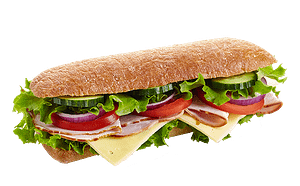
Let’s imagine that we got all of our customers together to make a sandwich, the biggest sandwich in the world. The current world record for the biggest sandwich is 74 metres. But I think we can do better.
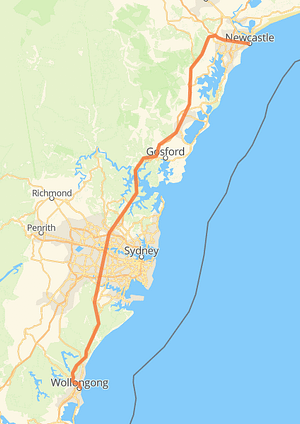
Let’s put all the benches together that you guys have bought in one long line to form the longest bench. If we started building it on the outskirts of Newcastle, then it would wind its way down the coast through Sydney and end up somewhere in the middle of Wollongong. The bench would be 255,000 metres long. That’s quite a big bench. And we’d need a lot of butter. And a lot of people. And let’s hope there isn’t a shortage of lettuce when we do it.
But luckily, we have a lot of customers that might pitch in to help. There are 140,652 current customers of Brayco and Chairforce, enough to fill both the MCG and the SCG. If we all pitched in, I think the sandwich wouldn’t take long to make at all. Wouldn’t take long to eat it either.
So, thank you lovely customers. The Brayco team are wholly reliant on your goodwill and continued custom. We hope to earn it. We are committed to the 4-pillars approach — and hopefully, together, in another twenty years time, we can make a sandwich to stretch from Sydney to Melbourne and beyond.
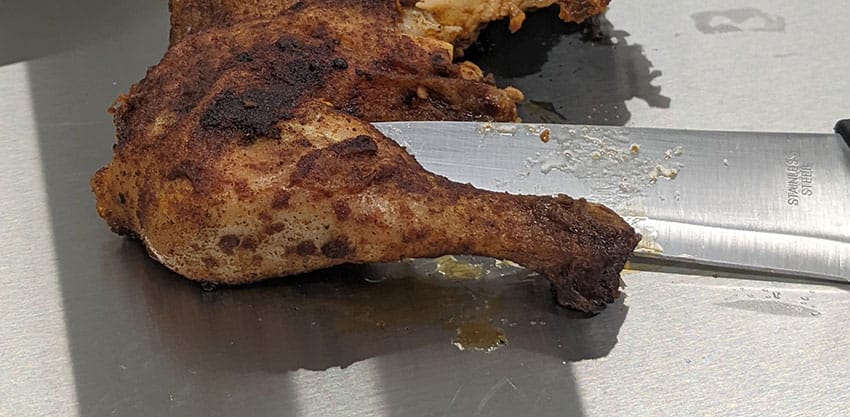
What a steel – 304 or 430?
Are you in the market to set up or upgrade a café or restaurant kitchen? There are so many elements to consider and throw in huge price variations for what looks like the same product, you might be rocking in a corner wondering what you got yourself into. When it comes to stainless steel products, it’s important to be aware of the difference in quality when you’re faced with cheap price tags.
For those of us with untrained eyes to the specificities of metals, you might have thought stainless steel was all one and the same. However, there are a variety of stainless-steel grades on the market depending on the desired usage, which mainly include 304 (for commercial kitchens) and 430 (lower grade for domestic kitchens and mechanical purposes).
At Brayco, we highly recommend that our customers investing in quality kitchen equipment (particularly commercial kitchens), choose 304 stainless steel over 430 because of the key difference – non-porous versus porous properties. Some of our competitors (don’t ask us to name names, we’re classy) are producing cheaper stainless-steel products due to the similarity in look, feel and touch of the two alloys. Here’s what you need to know when choosing your equipment.
 What are the key differences between 304 and 430?
What are the key differences between 304 and 430?
304 stainless steel is made up of around 18% chromium and 8% nickel. This combination creates excellent corrosion resistance from most oxidising acids, it’s highly durable and easy to sanitise (just soap and water will do it). The key attribute of 304 is it’s non-porous or impervious (councils love this word, fair warning), which makes it safe to prepare food on as it doesn’t absorb grease, food particles or water.
430 is a plain chromium ferritic stainless steel with no nickel content which makes it a cheaper option, but it’s also less resistant to corrosion, less durable and porous in nature. 430 is fine for residential sheds, arts and crafts, and some home kitchen appliances (such as knives) but for commercial kitchen use, we recommend paying more for the 304 options.
This non-porous nature of 304 versus 430’s porous surface is critical in a kitchen environment where you want the most hygienic surface possible to prevent food bacteria. Call us crazy, but the last thing you want for your business is to be the source of salmonella or other nasty foodborne bacteria. A side of food poisoning with your carefully prepared special of the night? It’s a risk we wouldn’t be willing to take, that’s for sure.
 How can I tell which grade steel is used in a product?
How can I tell which grade steel is used in a product?
Spend three years at university and score yourself a metallurgy degree. Don’t have that much time? Neither do we. Visually, it’s hard to tell the difference but there are some quicker ways than adding ‘metallurgist’ to your vast list of qualifications.
For those of you who carry a magnet in your back pocket, whip it out and check it against the surface of the stainless steel. If it drops to the ground, you’ve got yourself a high quality 304 stainless steel. If it clings to the table, say hello to a lesser grade 430.
Another option is to be brazen – ask the seller outright what grade they’re using. Many companies don’t disclose the grade of stainless steel upfront (particularly if it’s 430), so be savvy and ask. They might use the word ‘ferritic’ which simply means iron-based, aka 430, which you know because you’re a clever cookie who did your research.
But I really like cheap things… can I use 430 in my commercial kitchen?
We hear you, finding a bargain is a great victory. Once upon a time, food regulations stipulated all commercial operations must have non-porous surfaces for food preparation. Food Standards Australia maintains the guideline of an ‘impervious’ surface in its criteria. Local council’s standards now vary so you must confirm which grade is required before purchasing. It’s worth remembering, regardless of your council’s requirements, that it’s a lot more costly to have a hygiene incident and lose customers than to set your kitchen up with the highest standard stainless steel surfaces right from the start.
What does Brayco do?
It’s a philosophical question for the ages, alright… but sharpening our focus to stainless steel, we are currently 100% 304 stainless steel in all of our benches, cabinets, shelving and sinks. Bring your fridge magnet and test us at one of our stores across Australian and New Zealand.
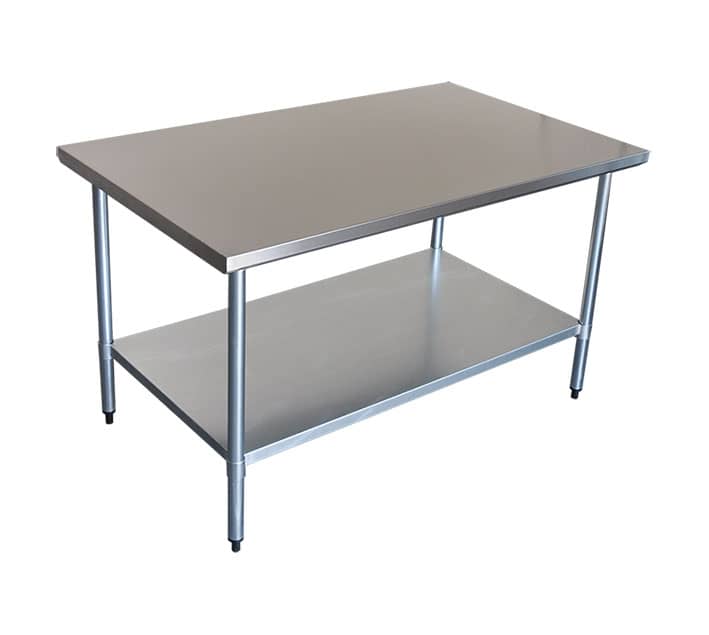
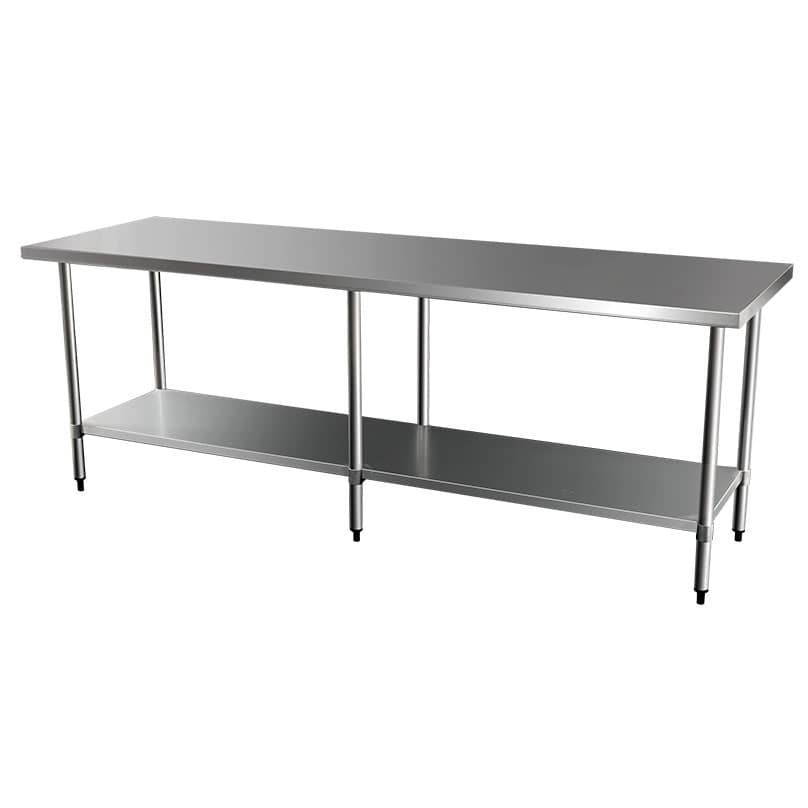

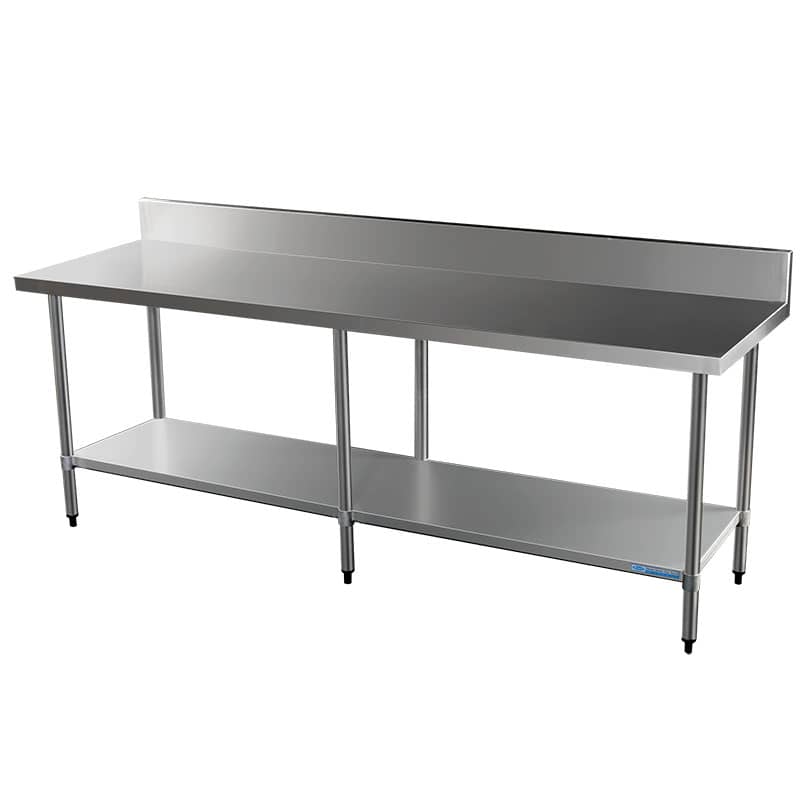
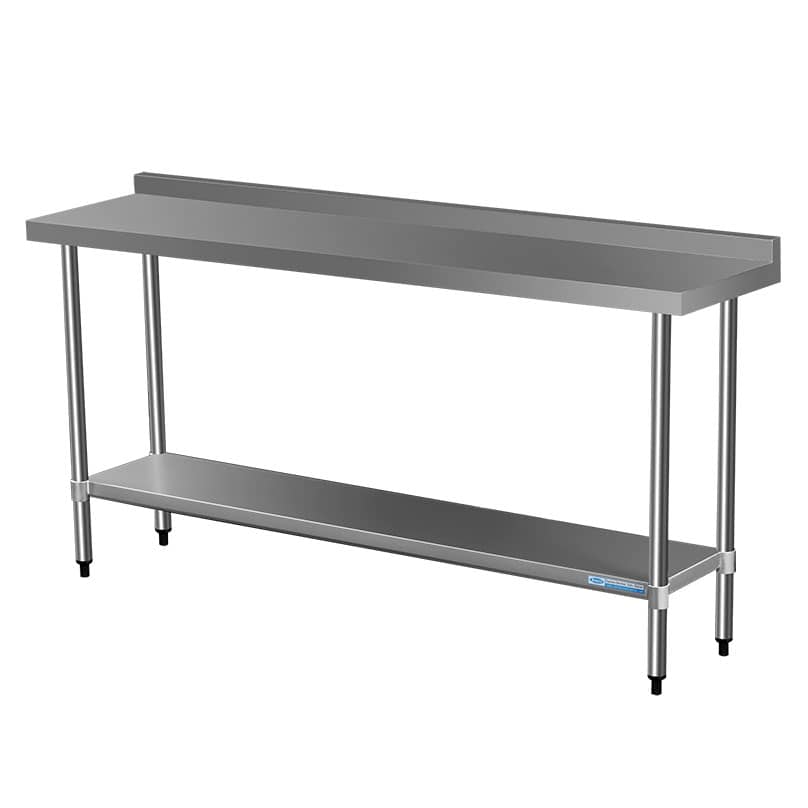
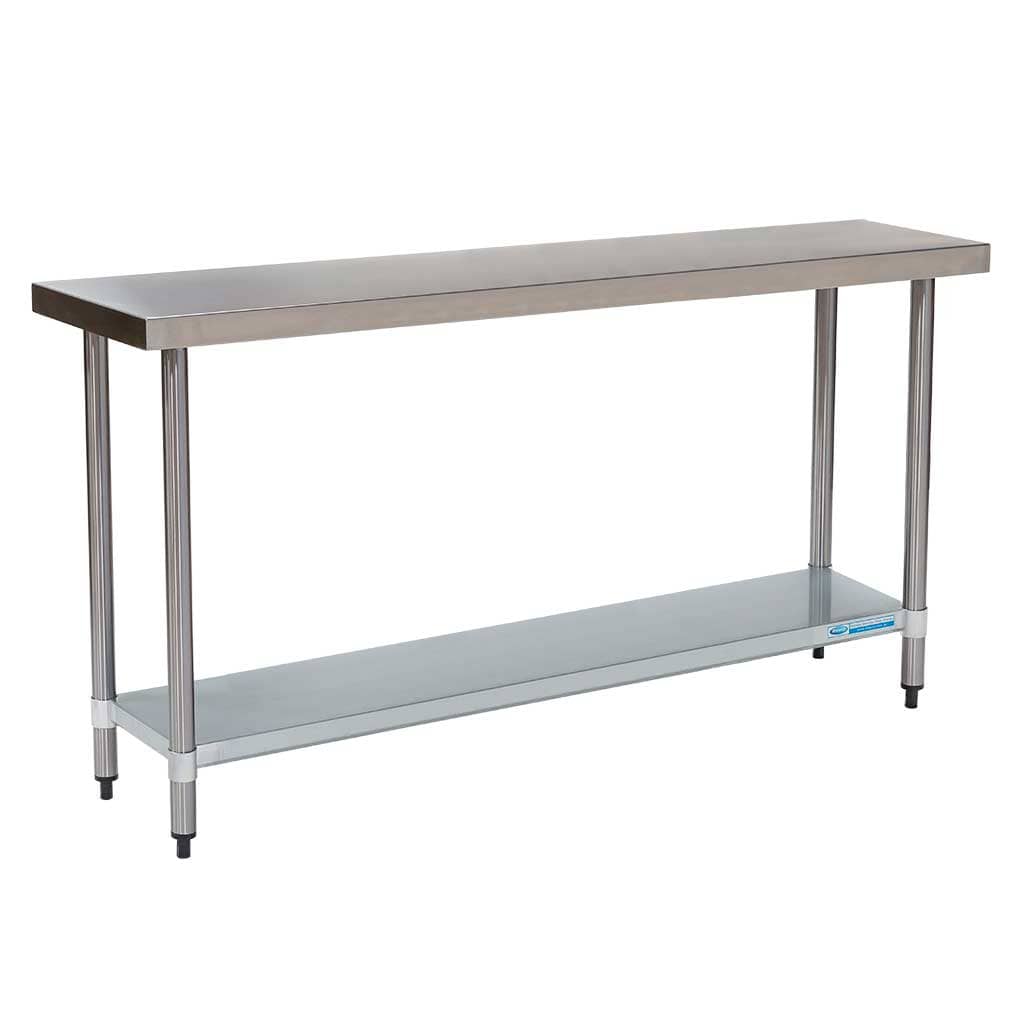
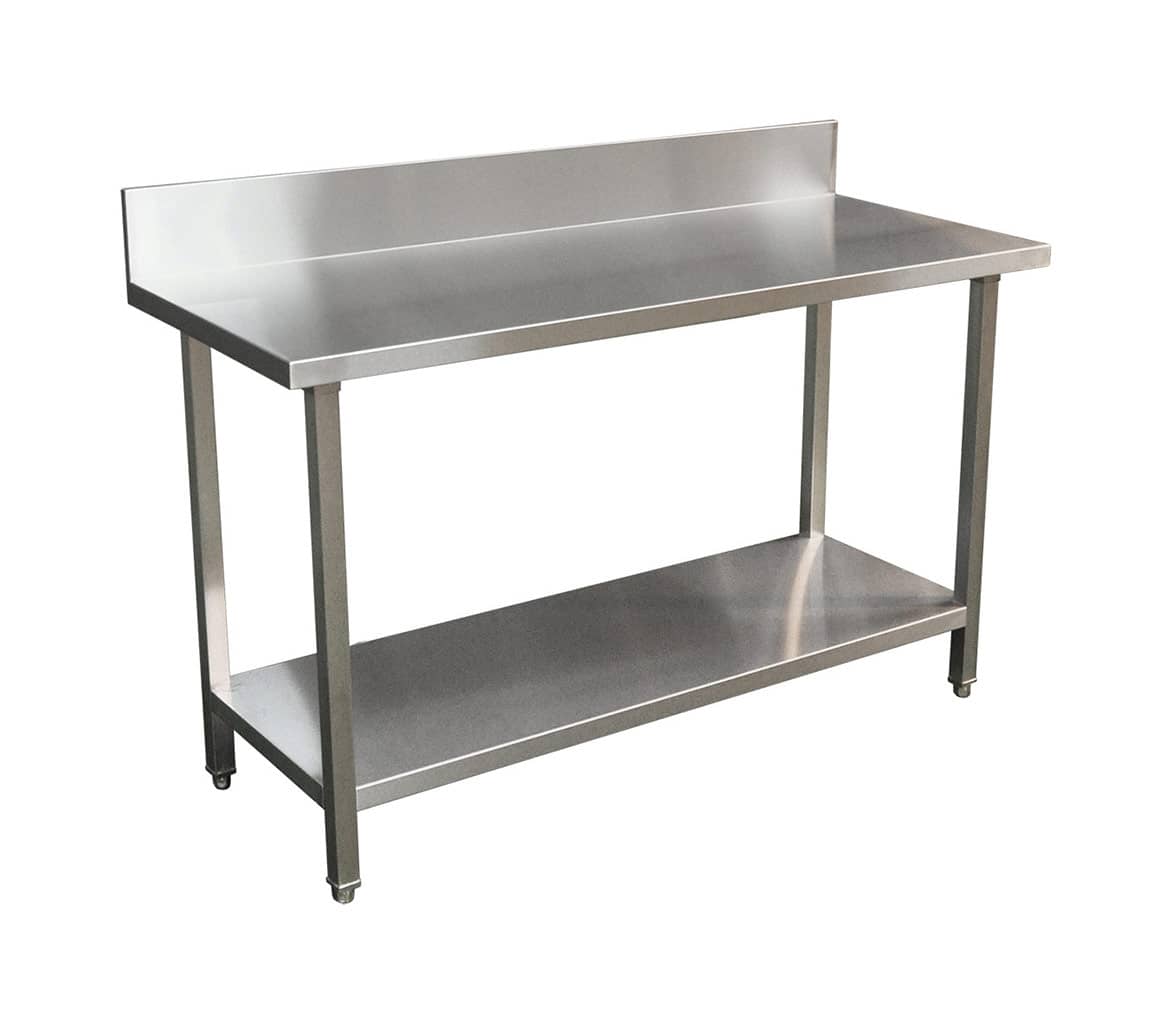
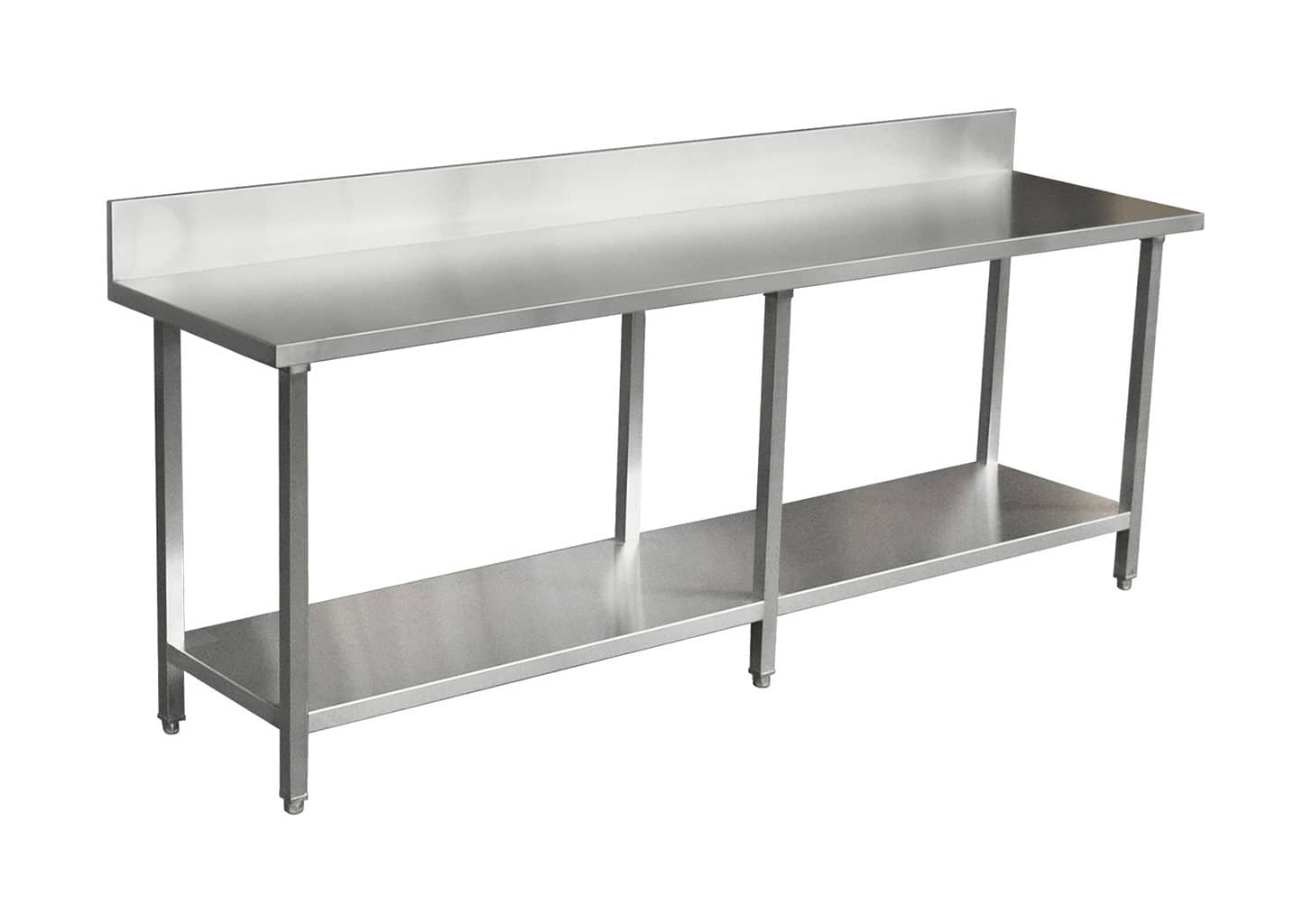
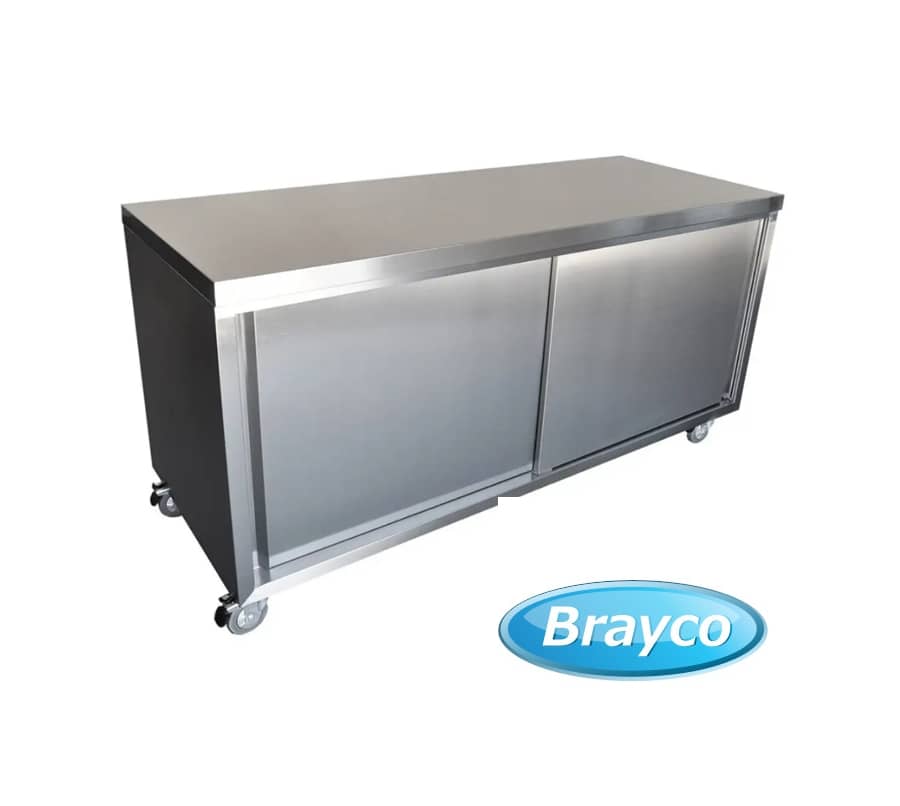
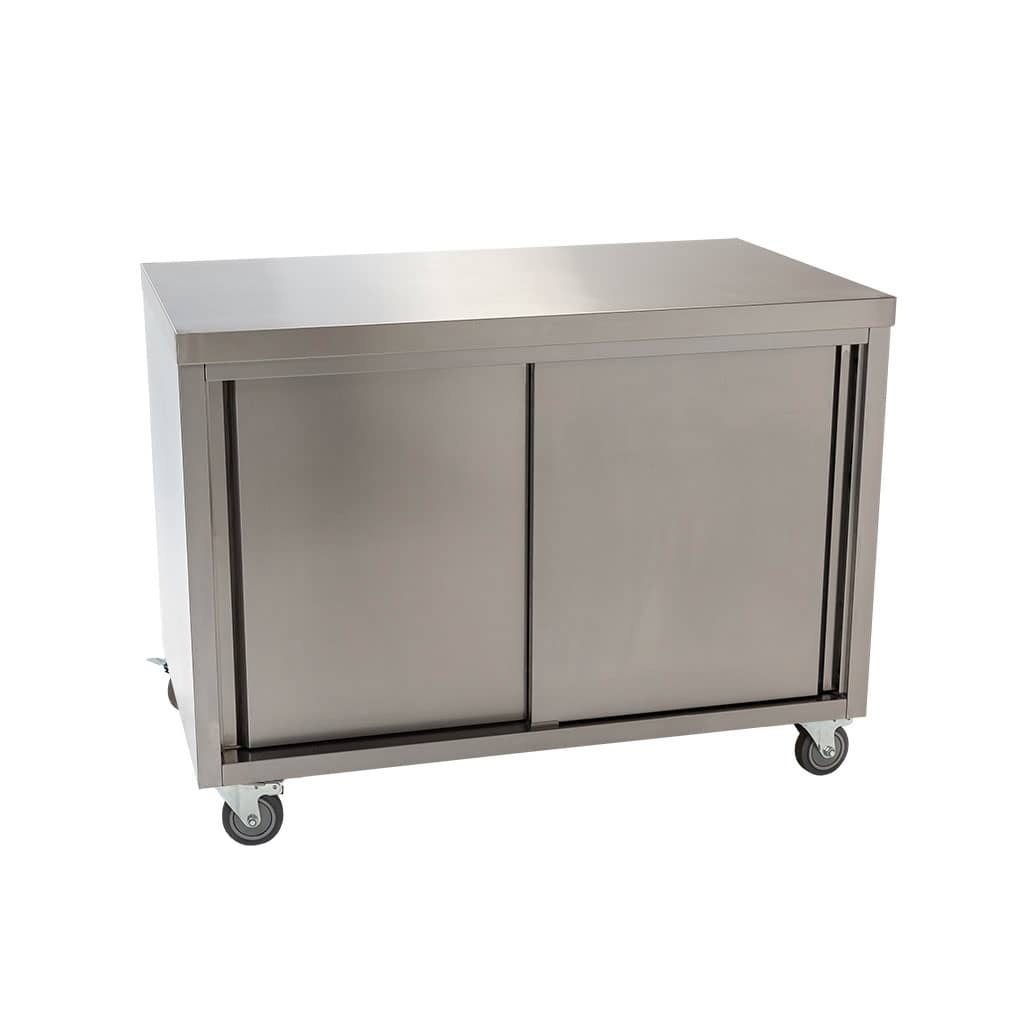
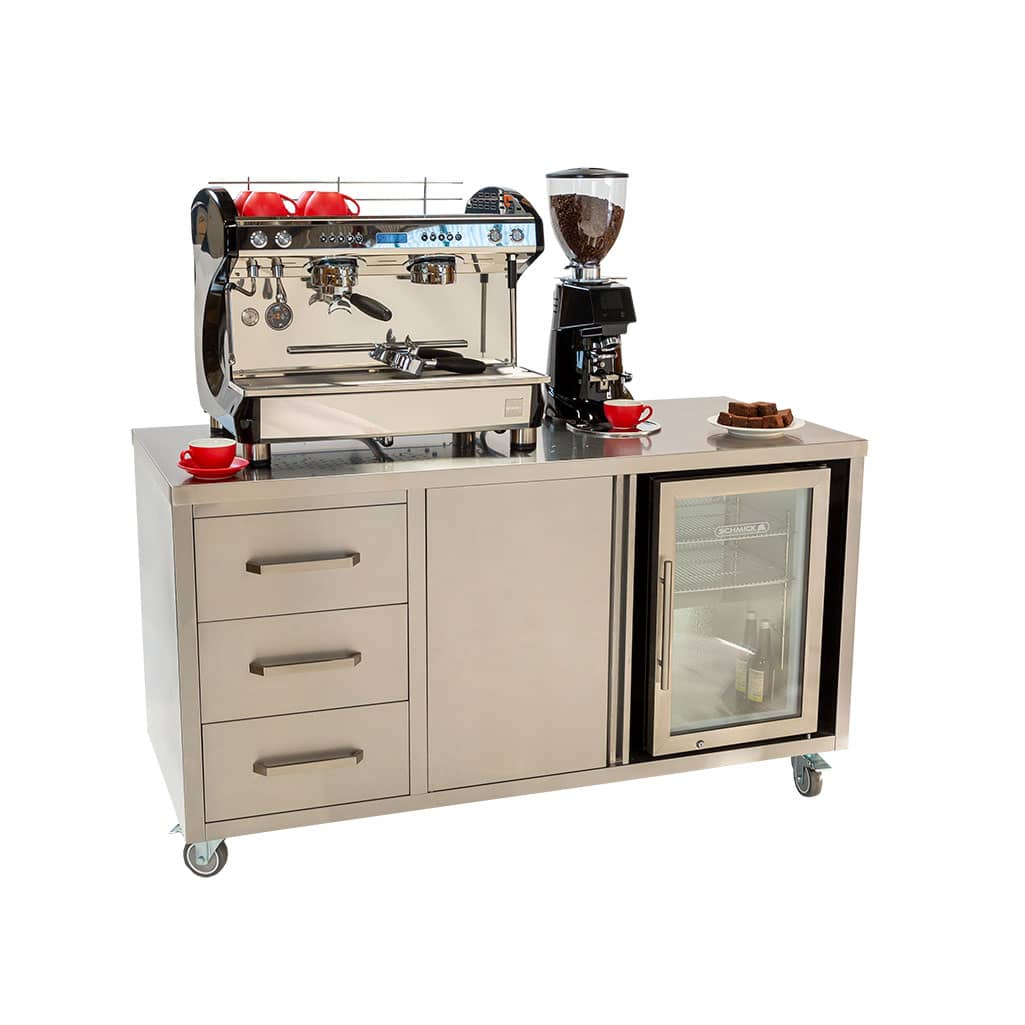
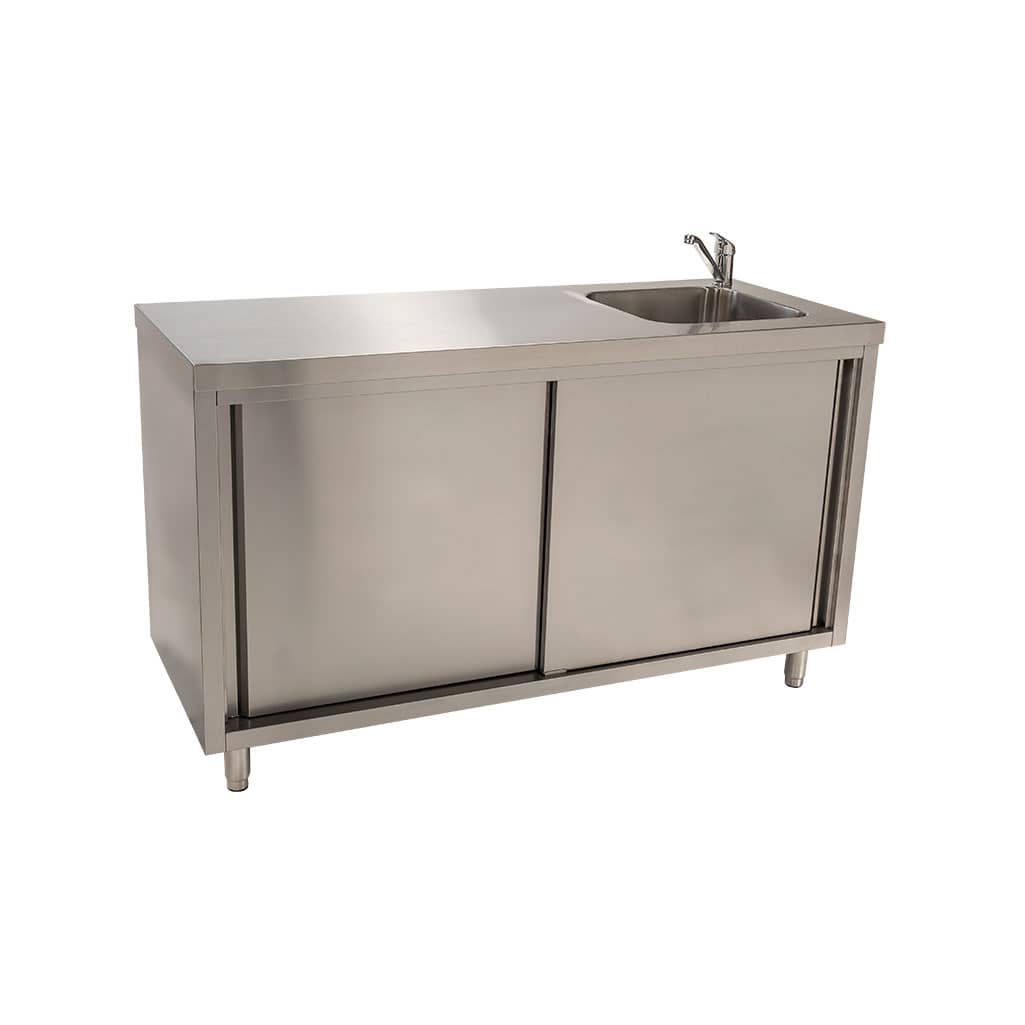

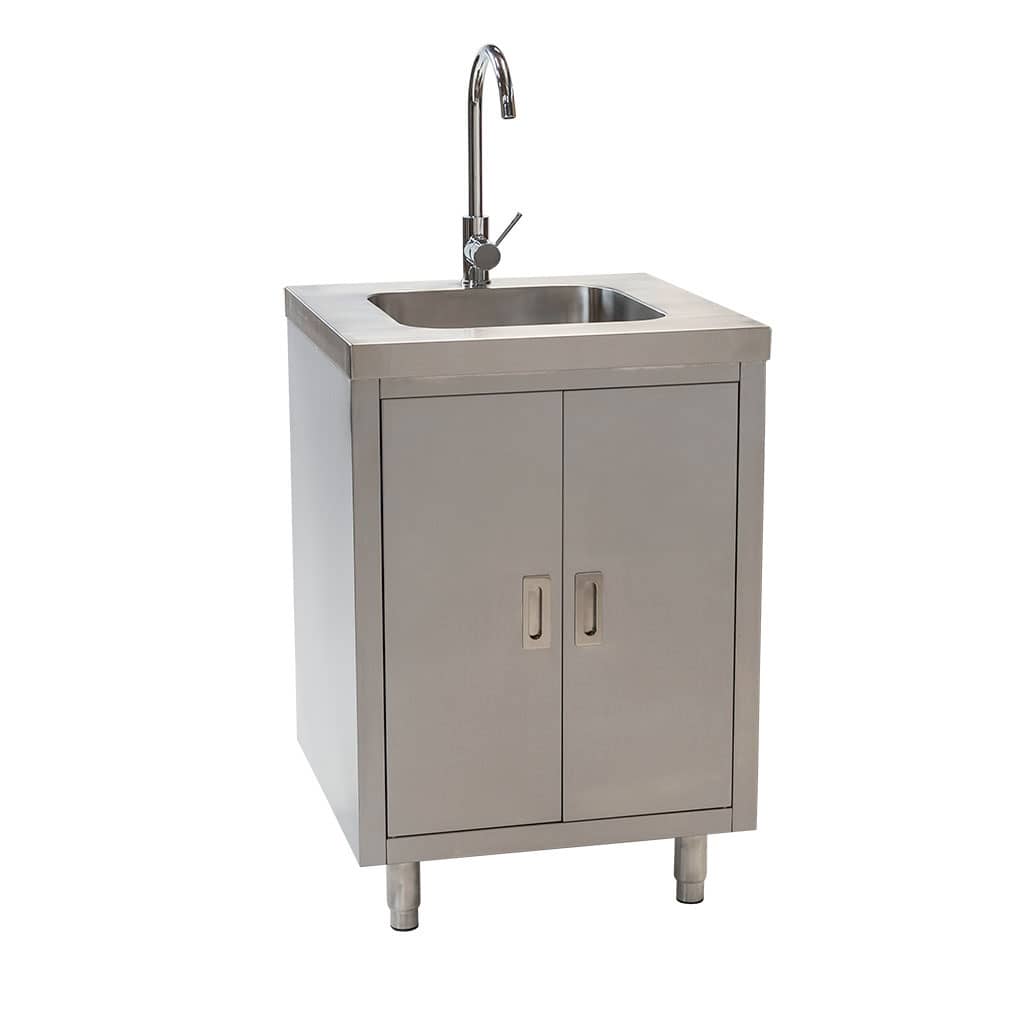
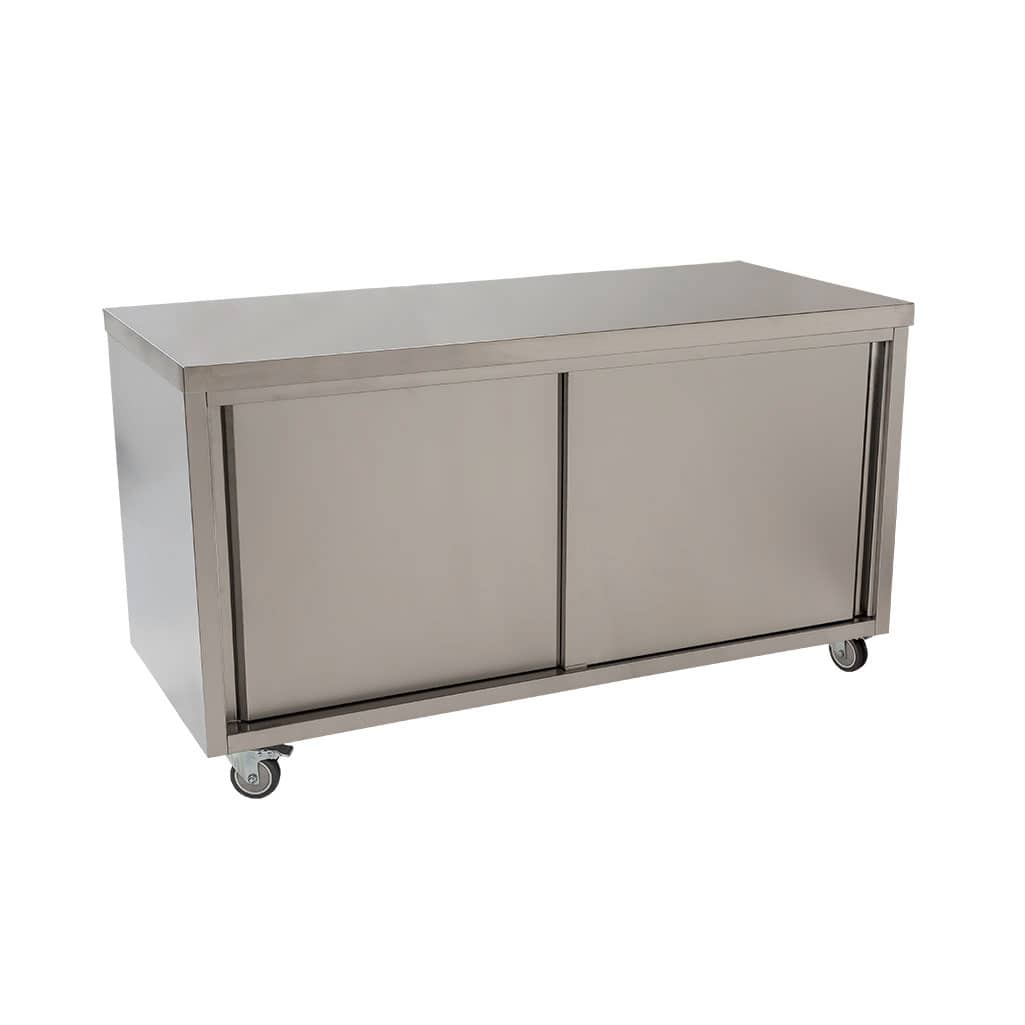

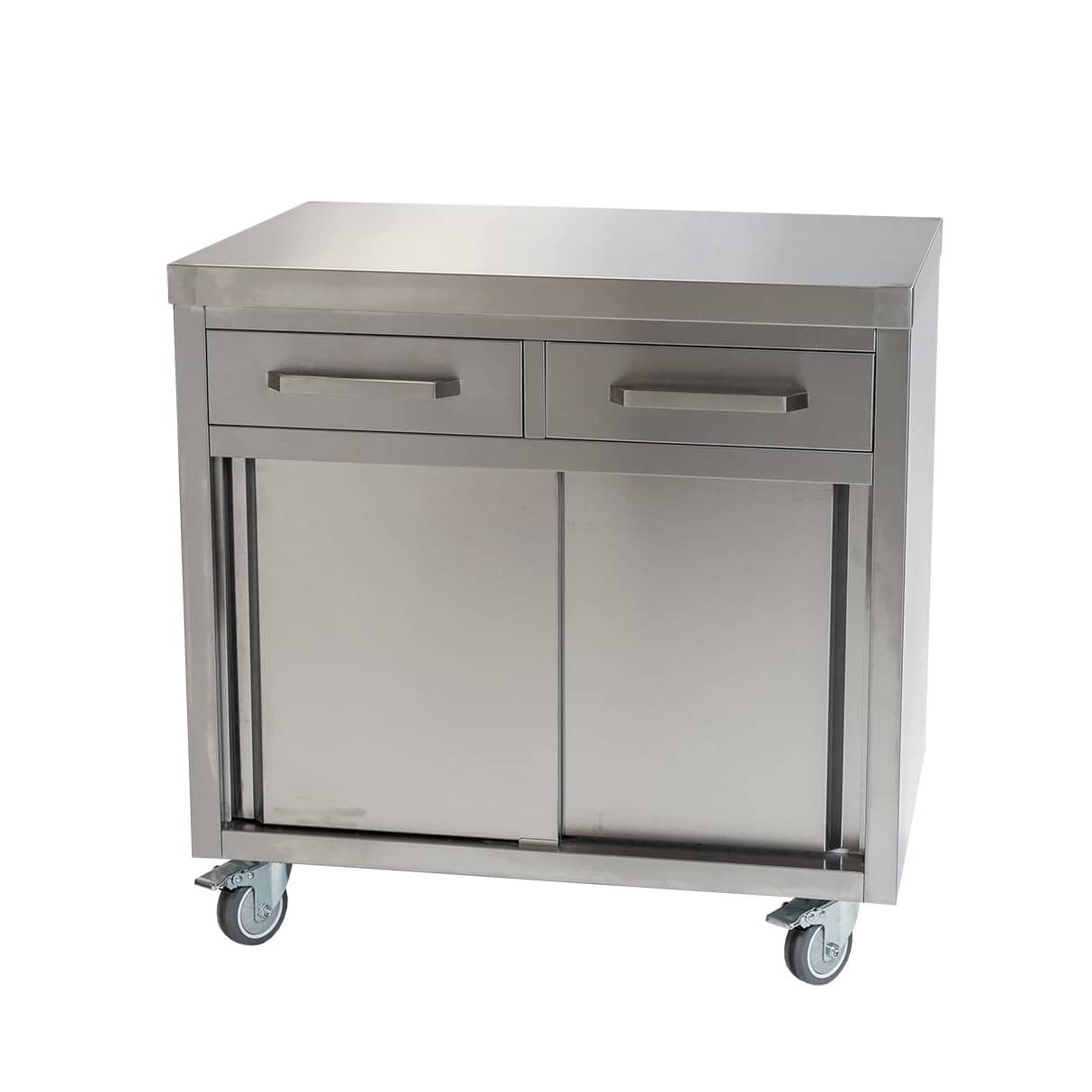










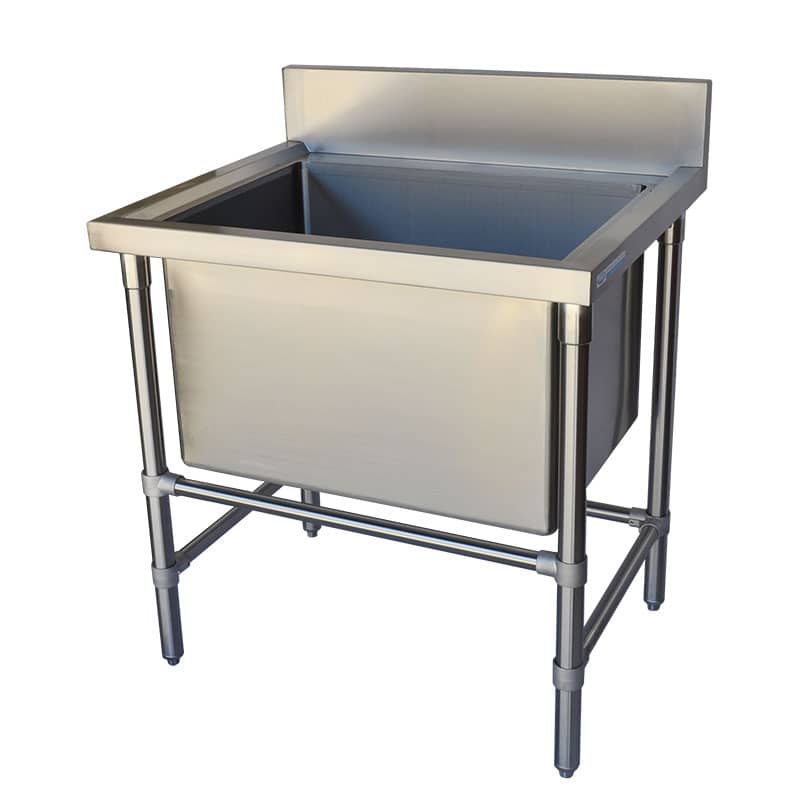
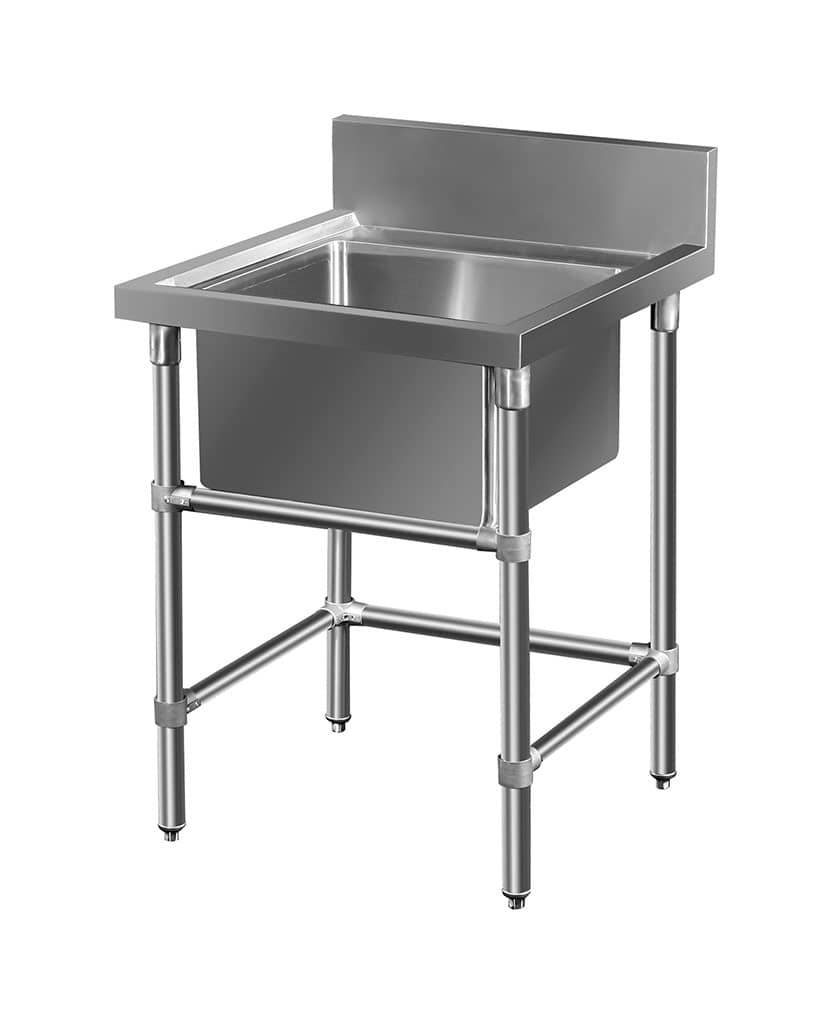

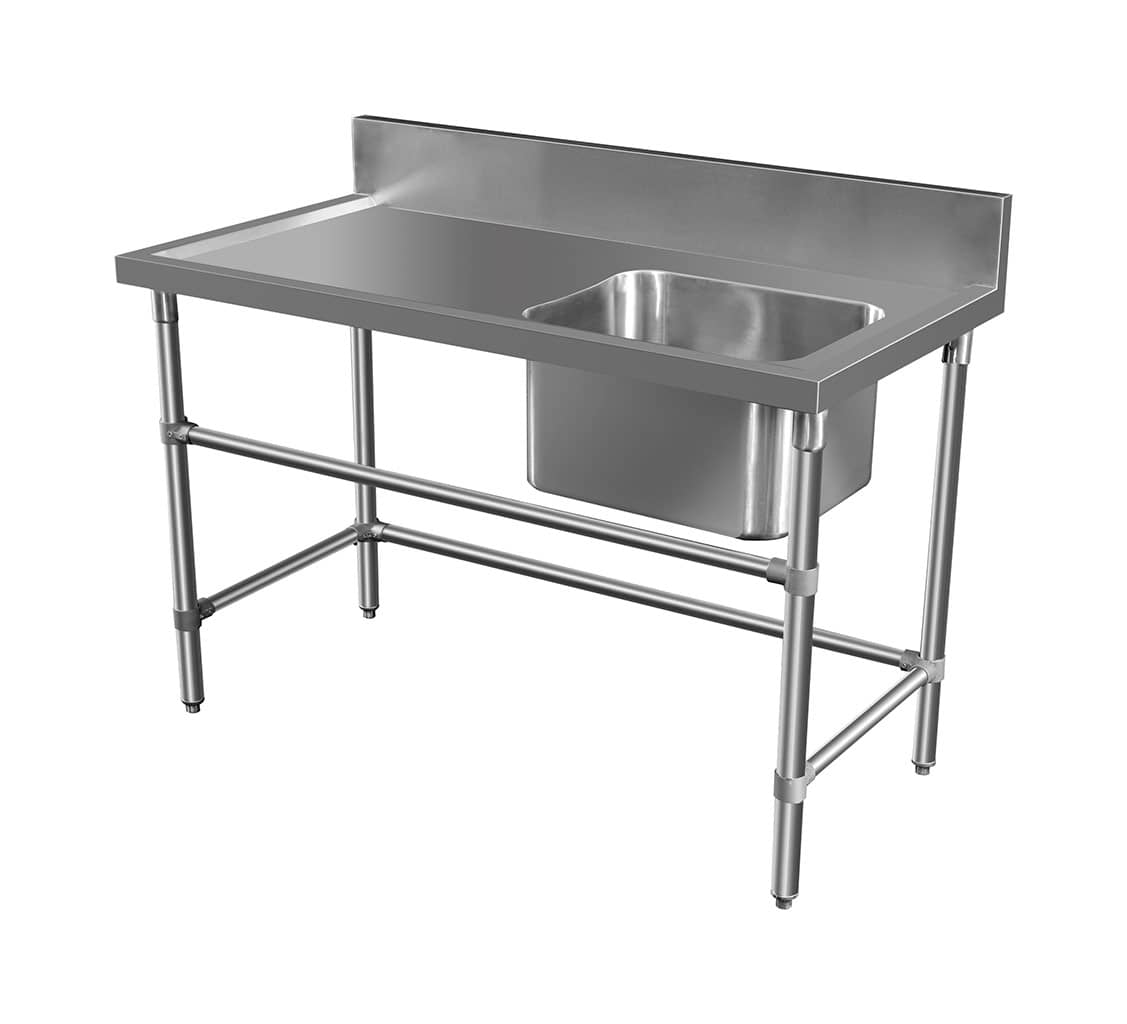
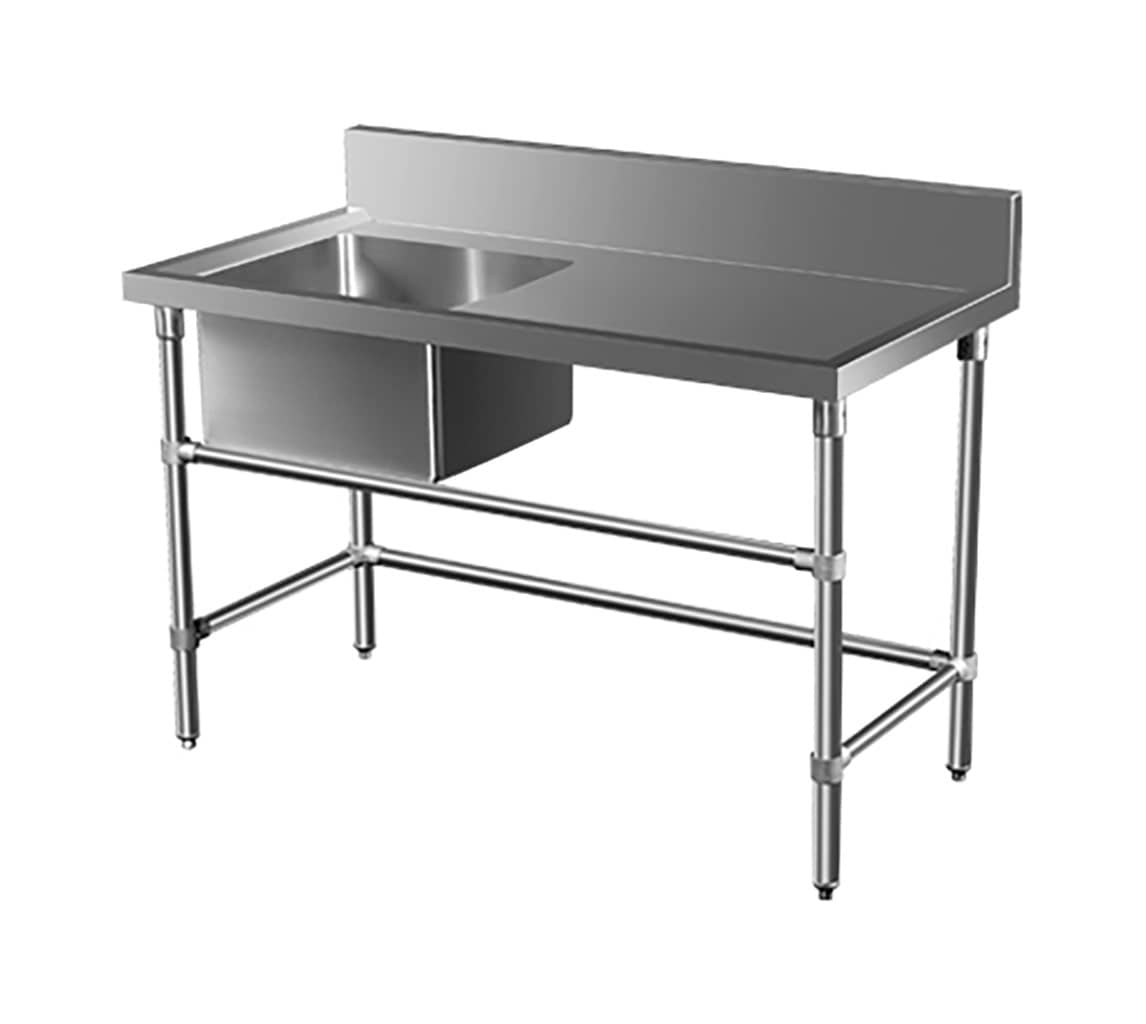
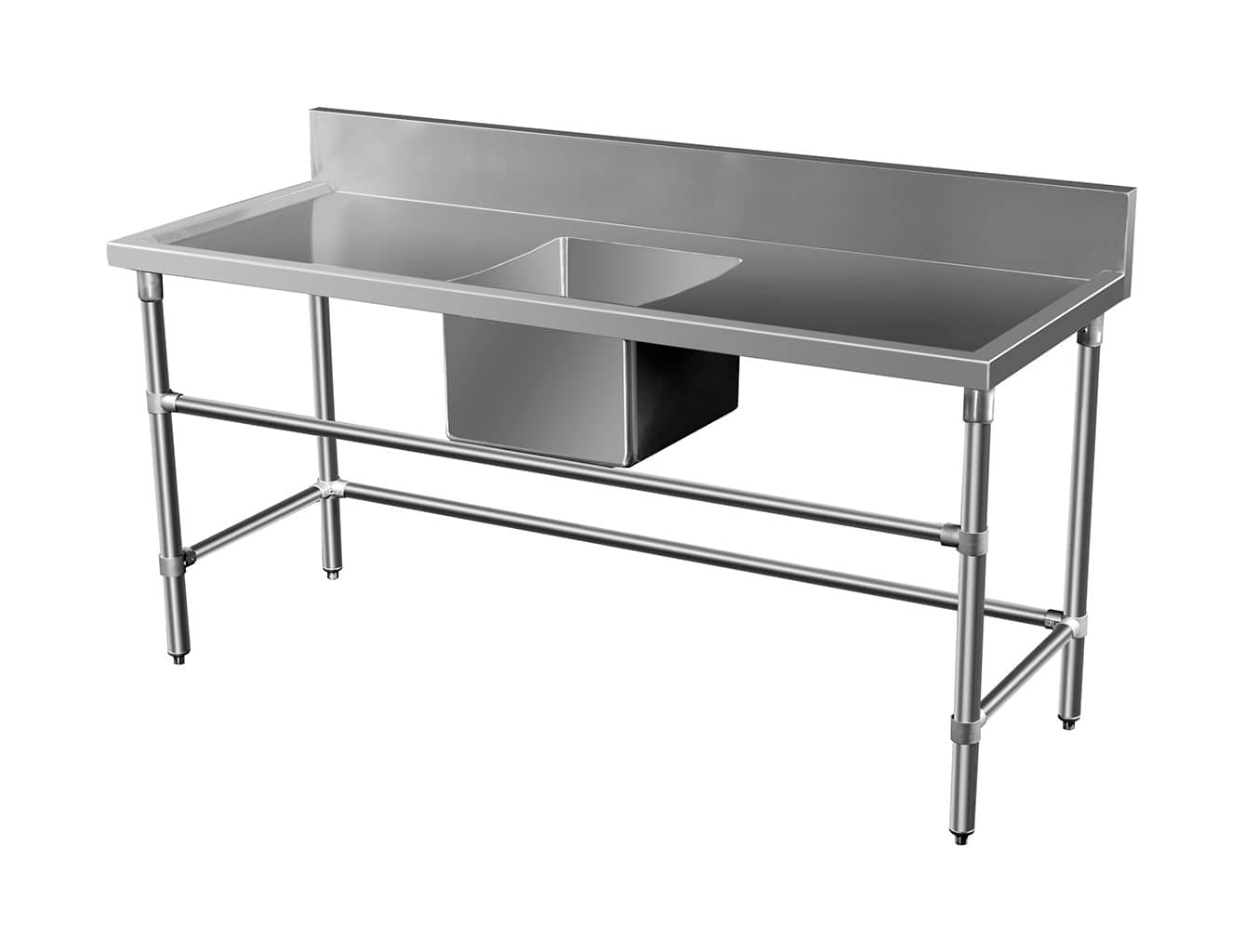
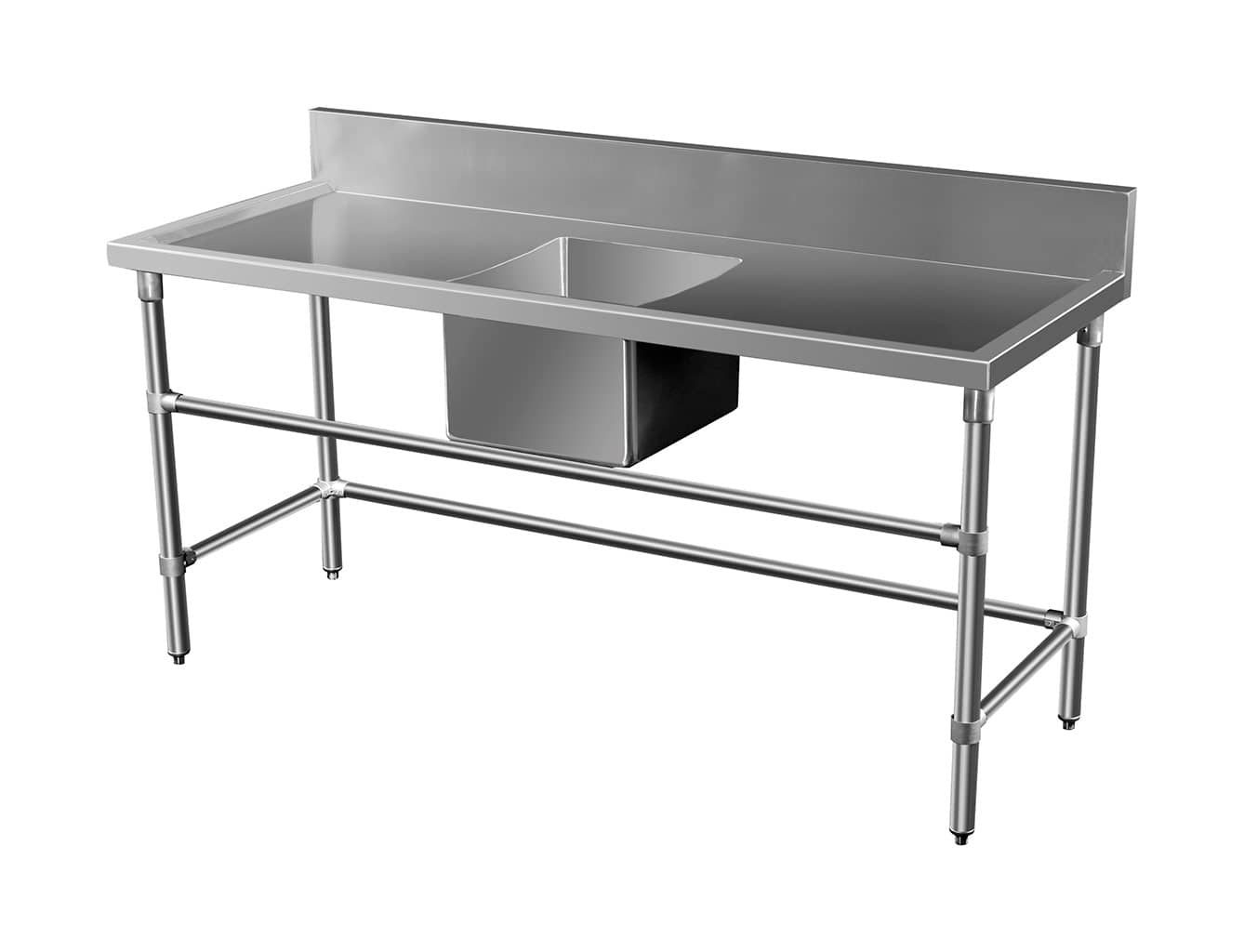
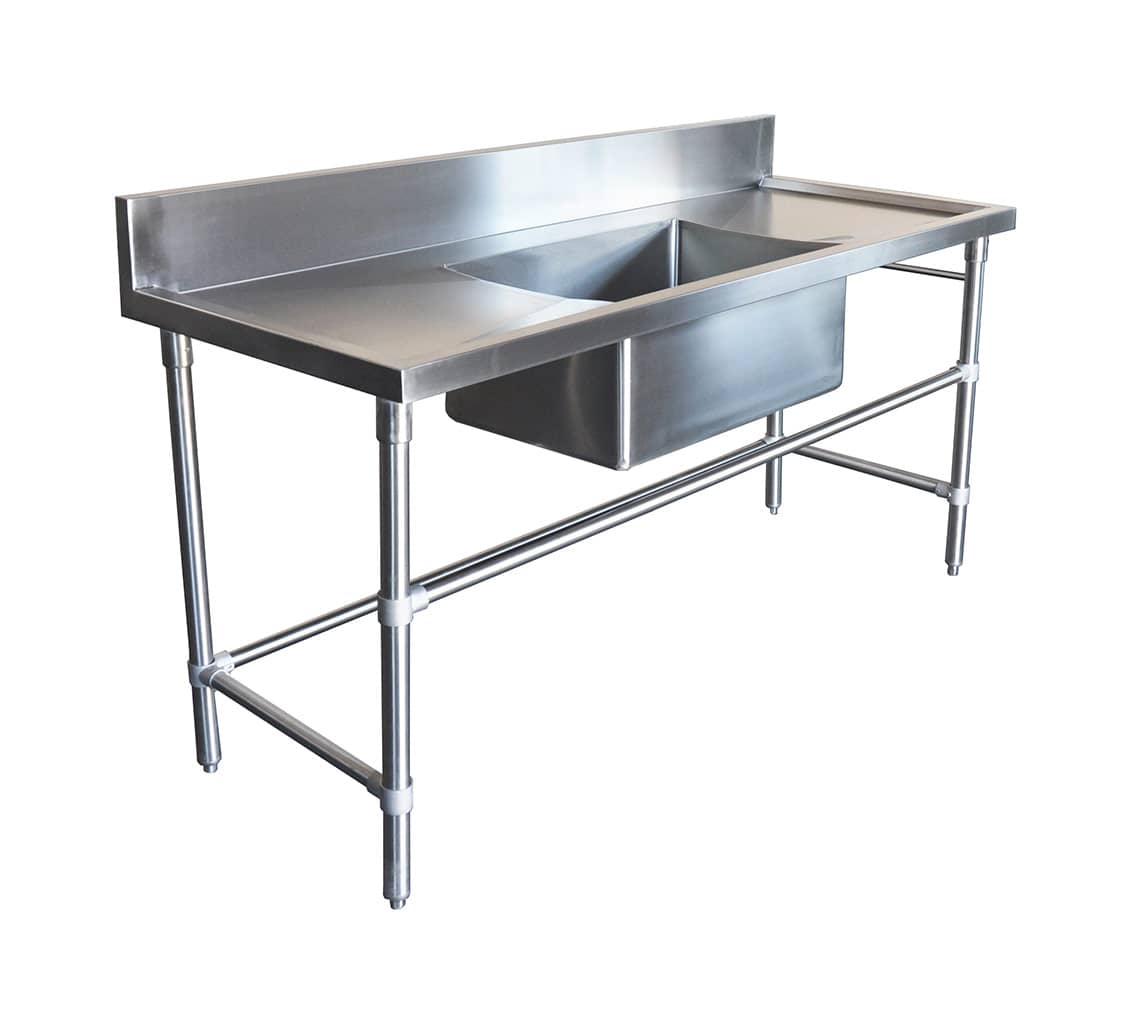
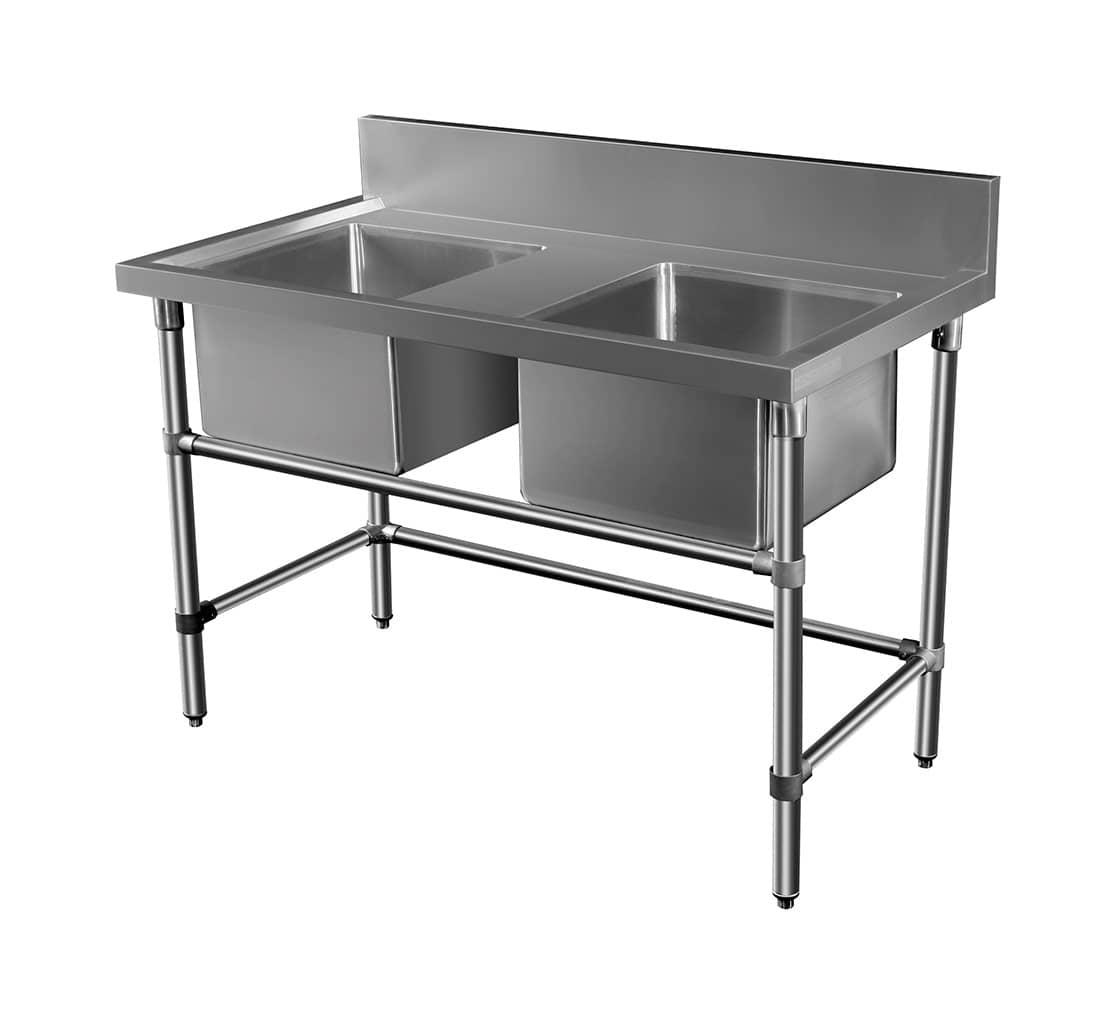
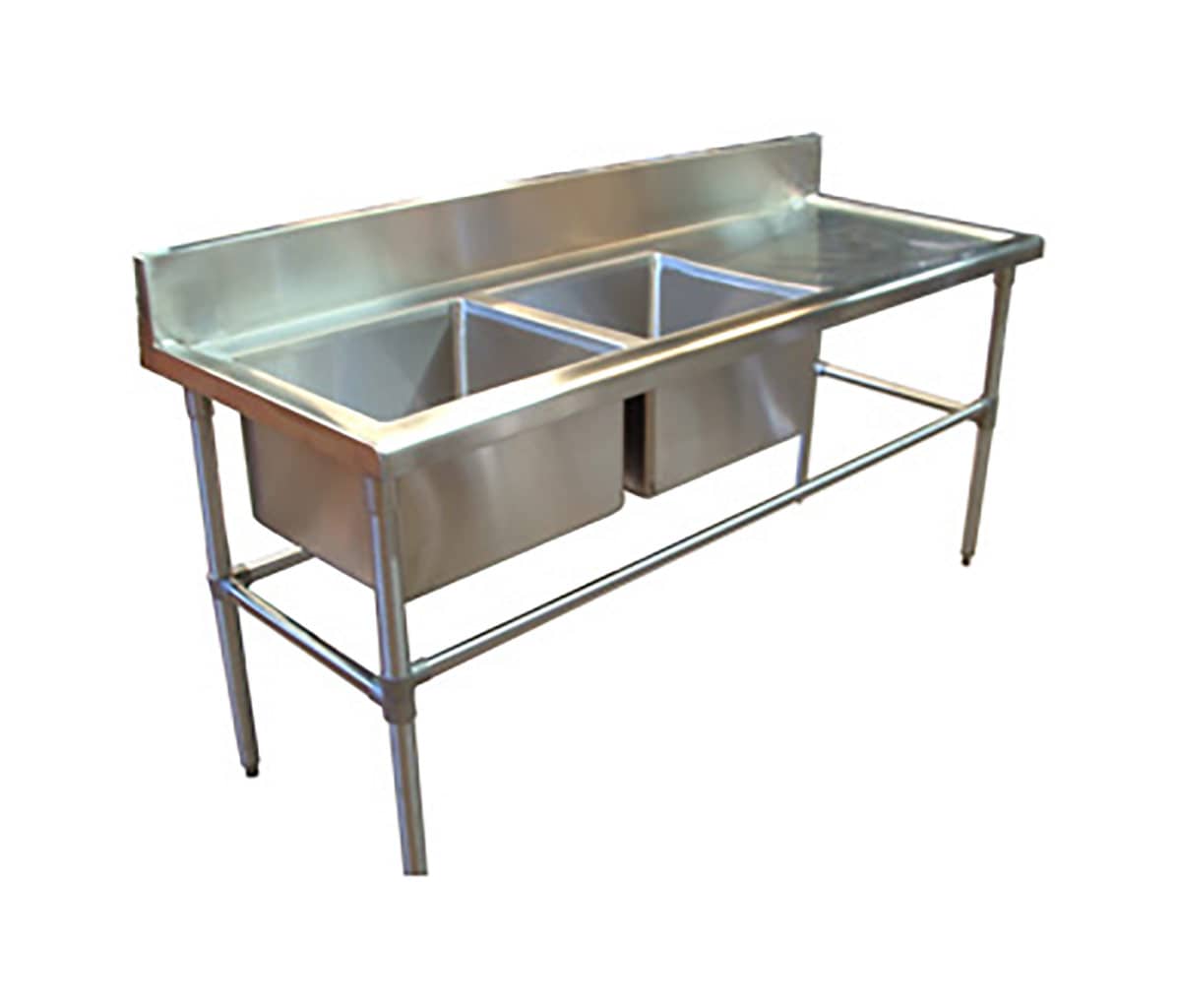
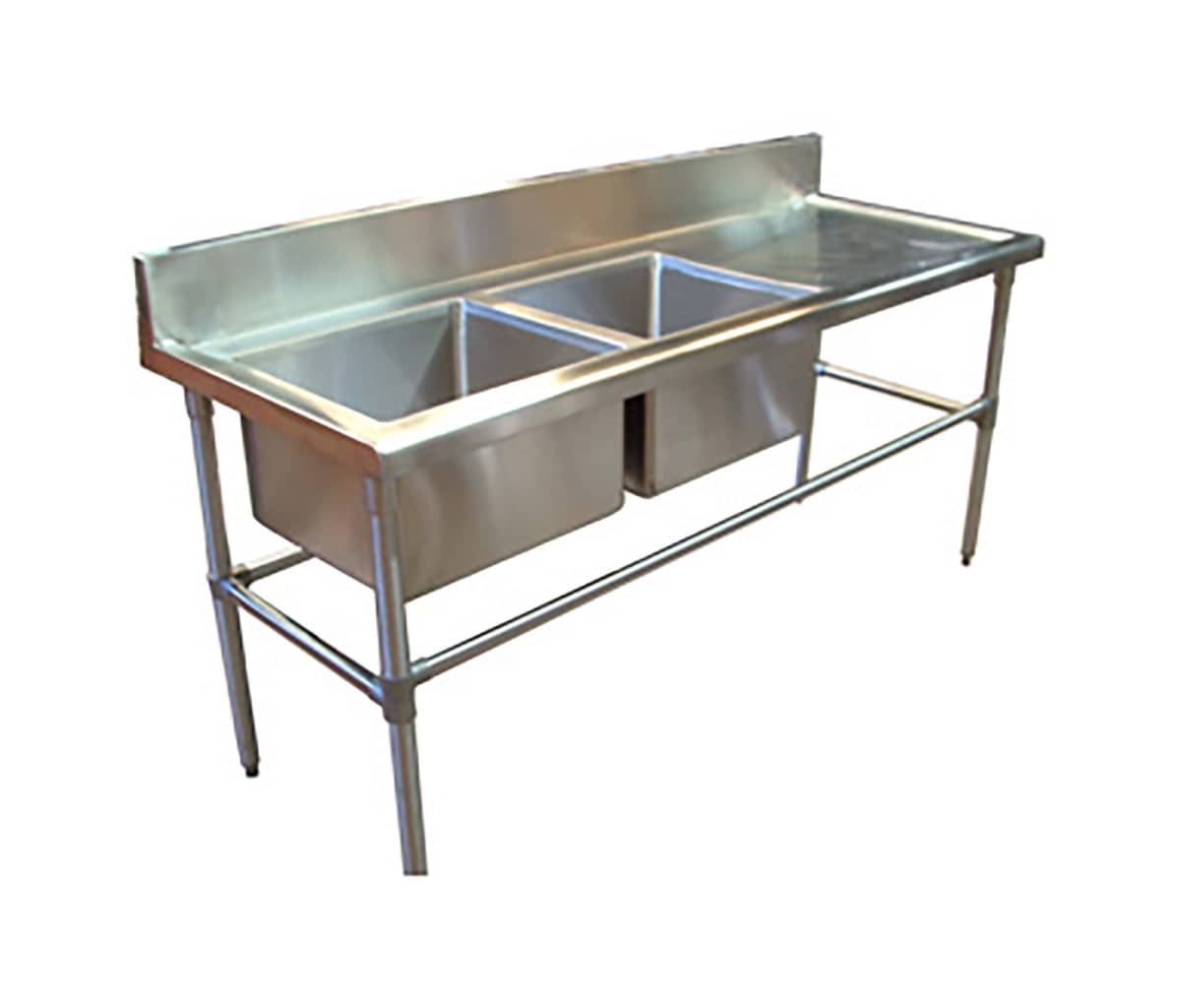
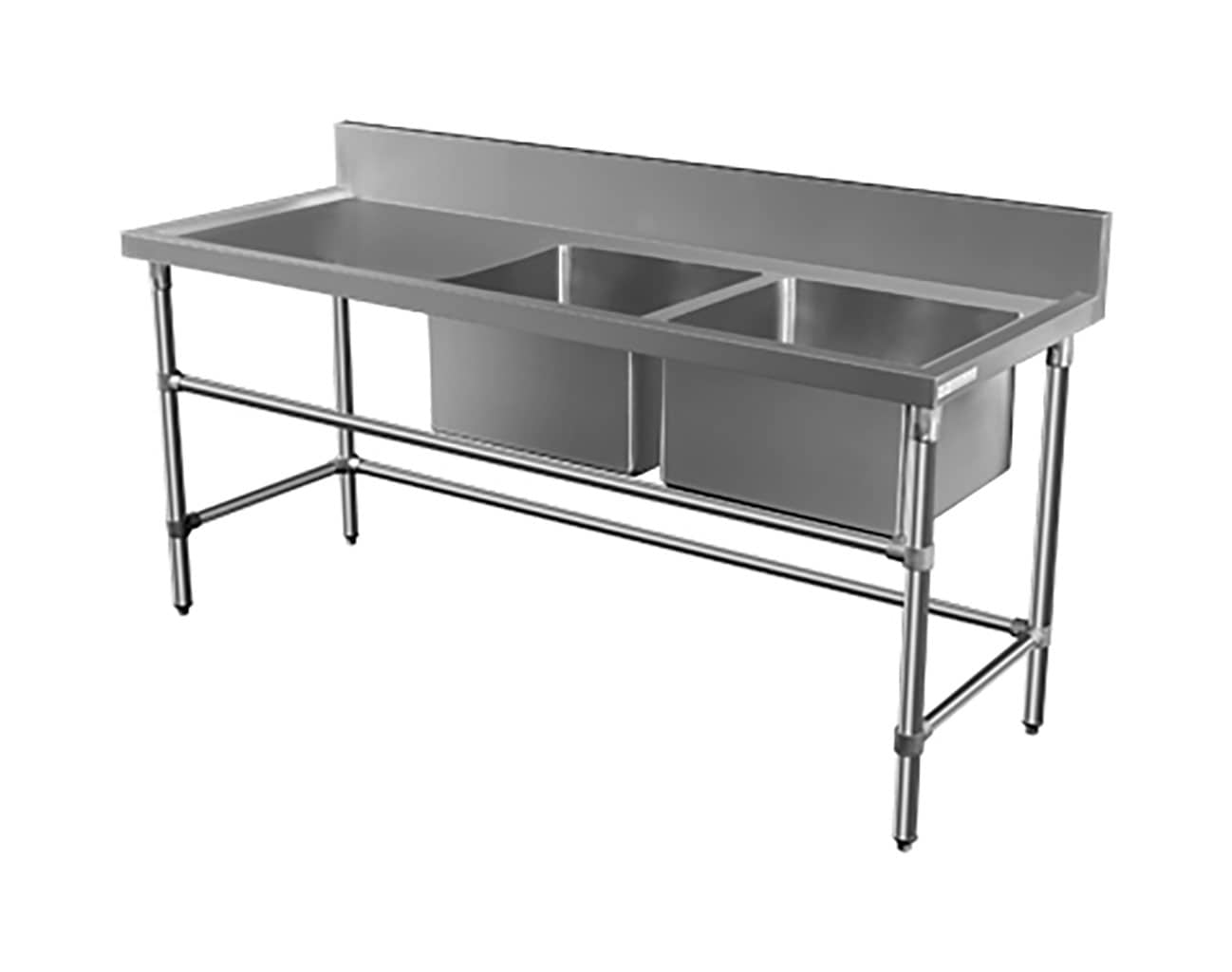
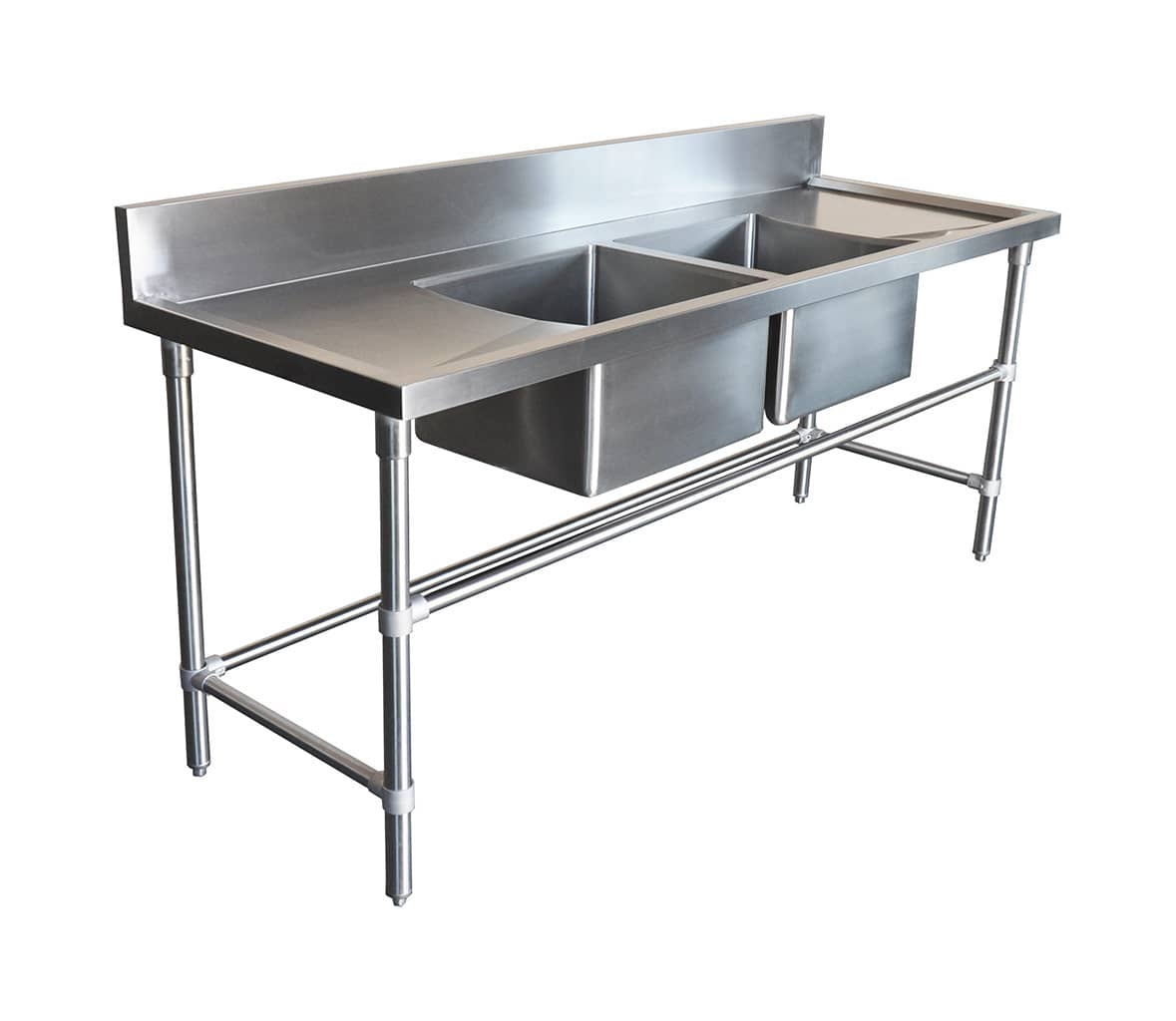
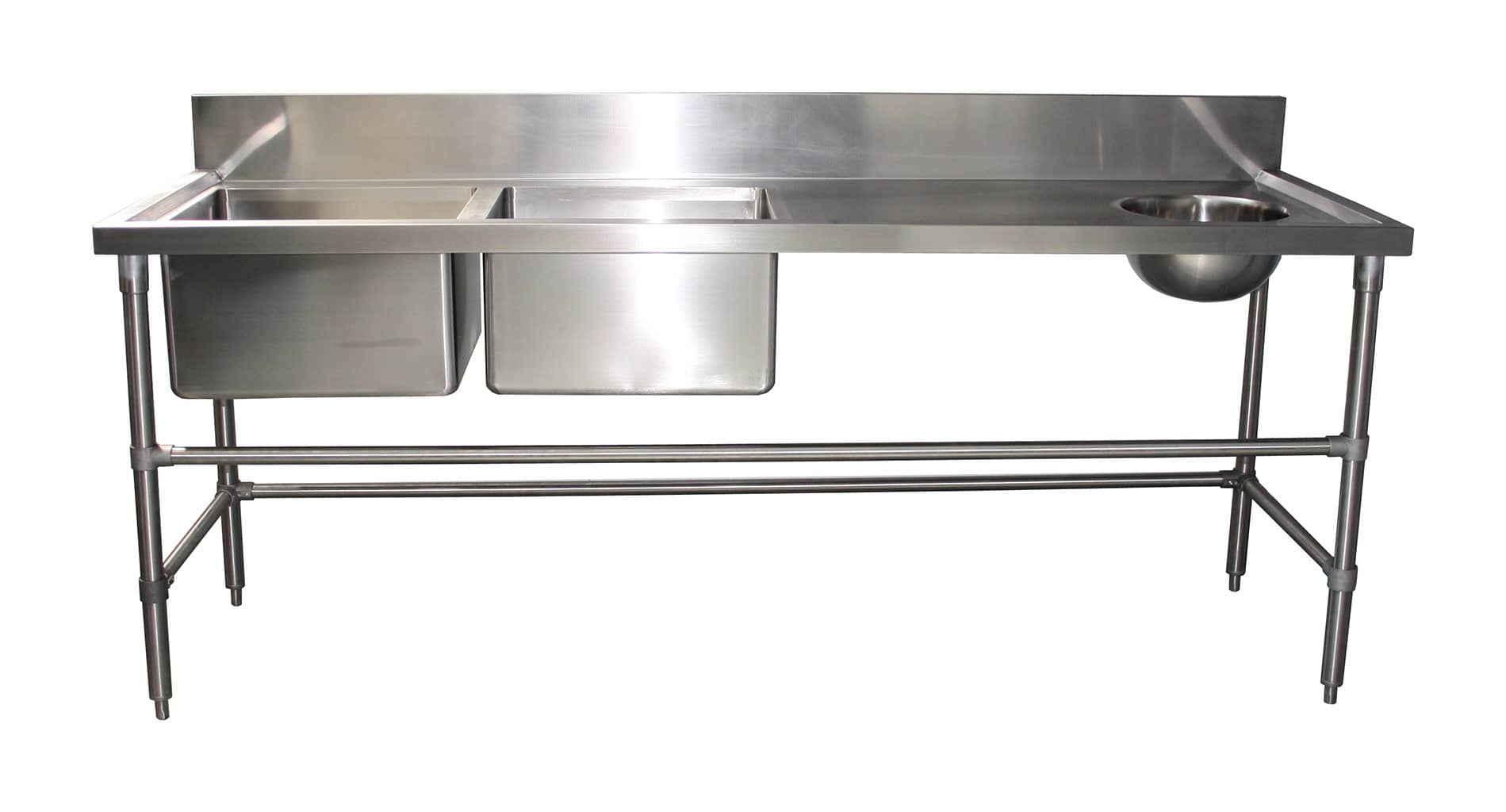
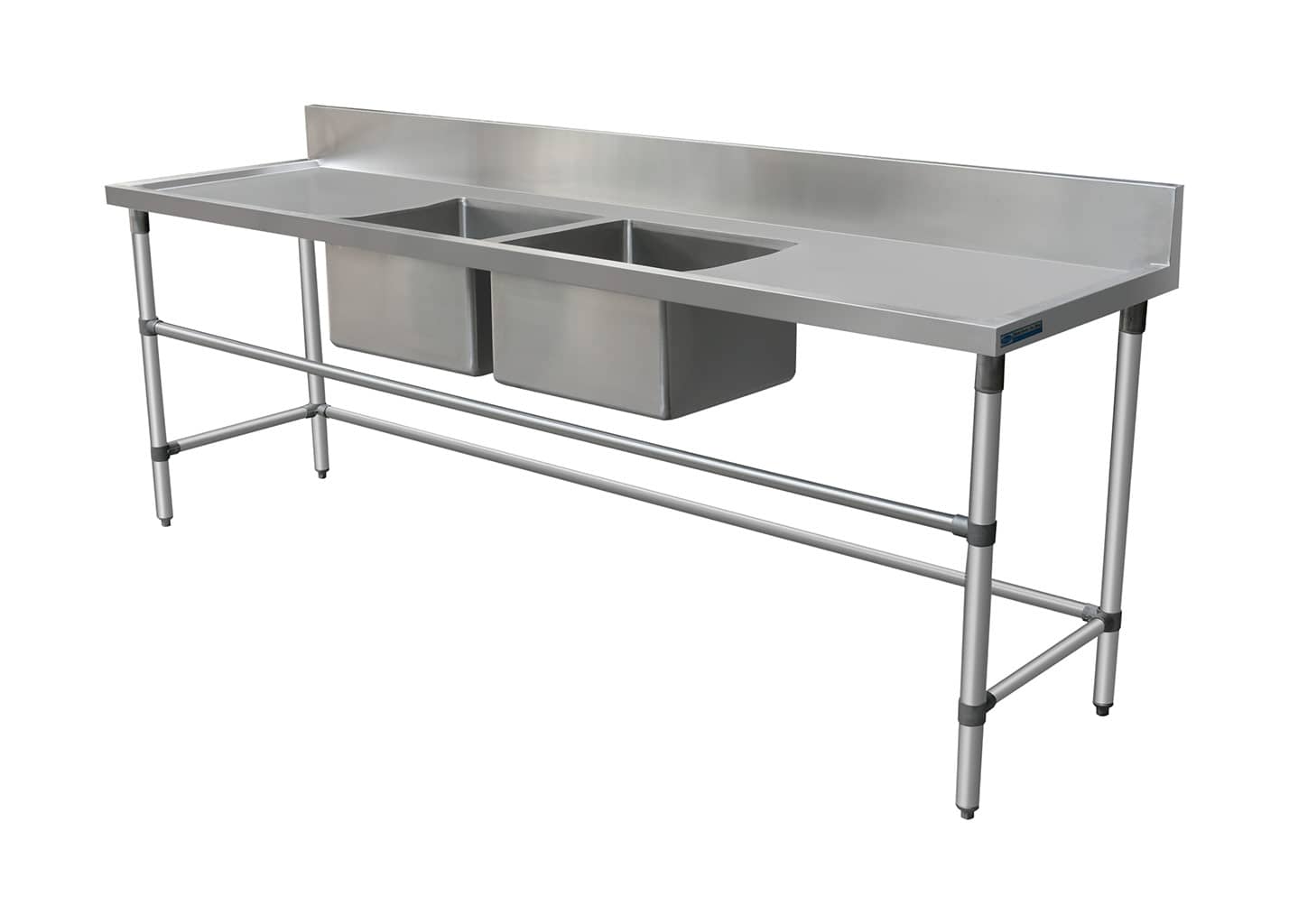

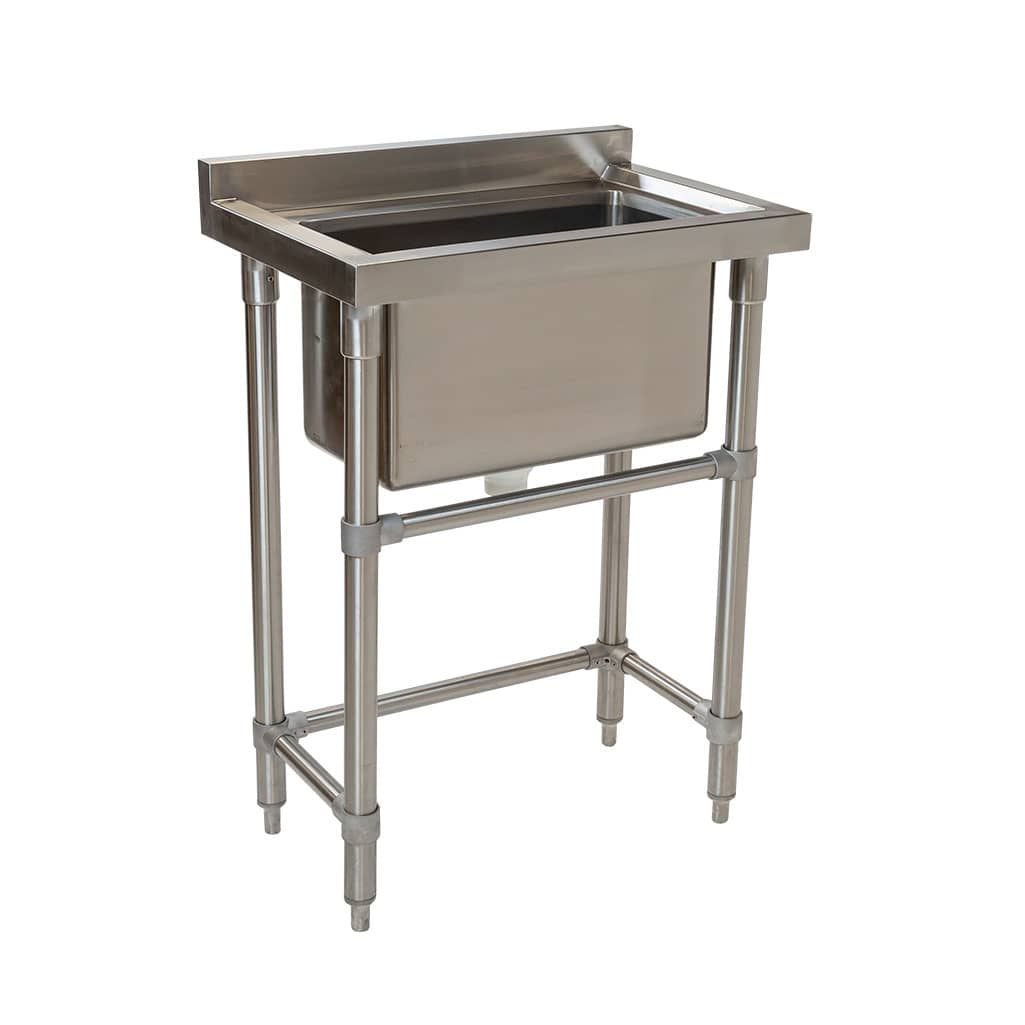
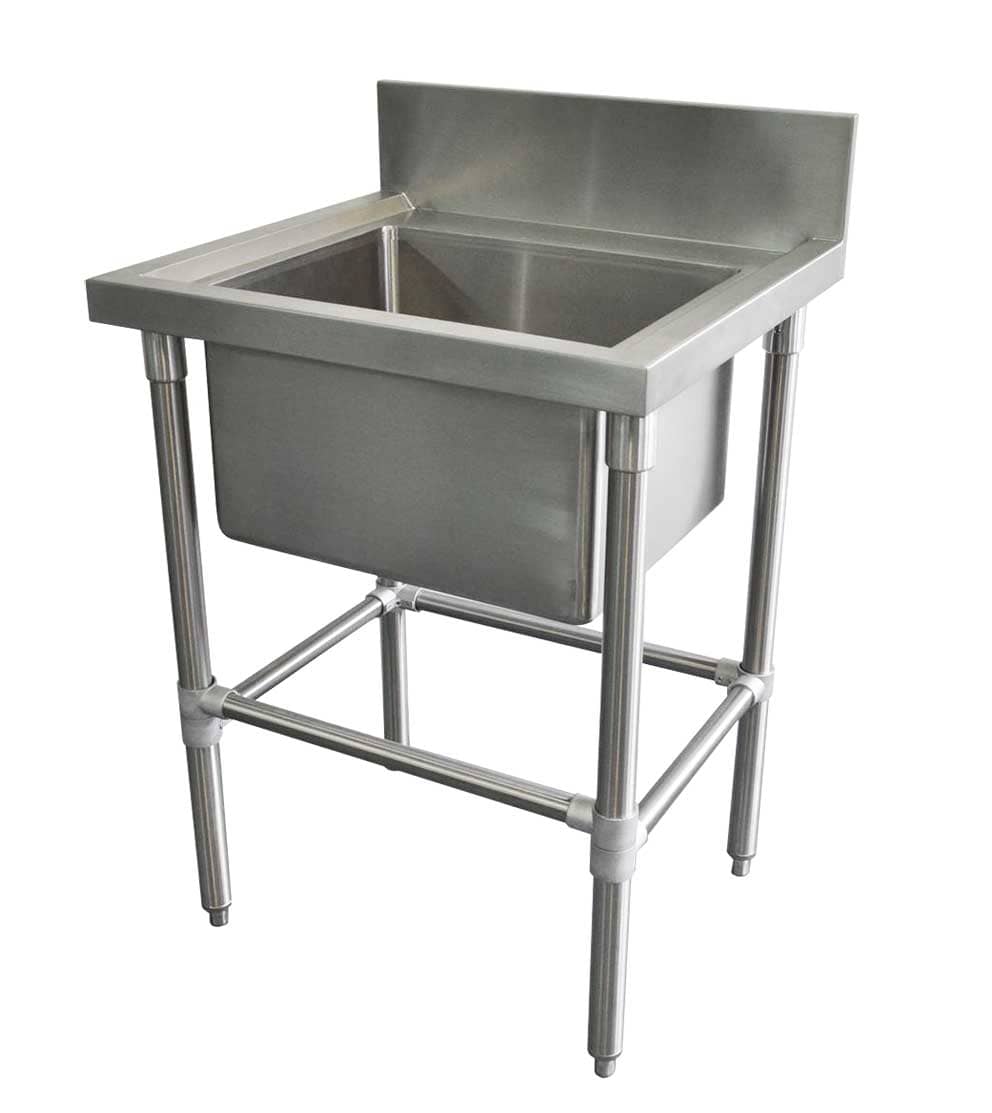
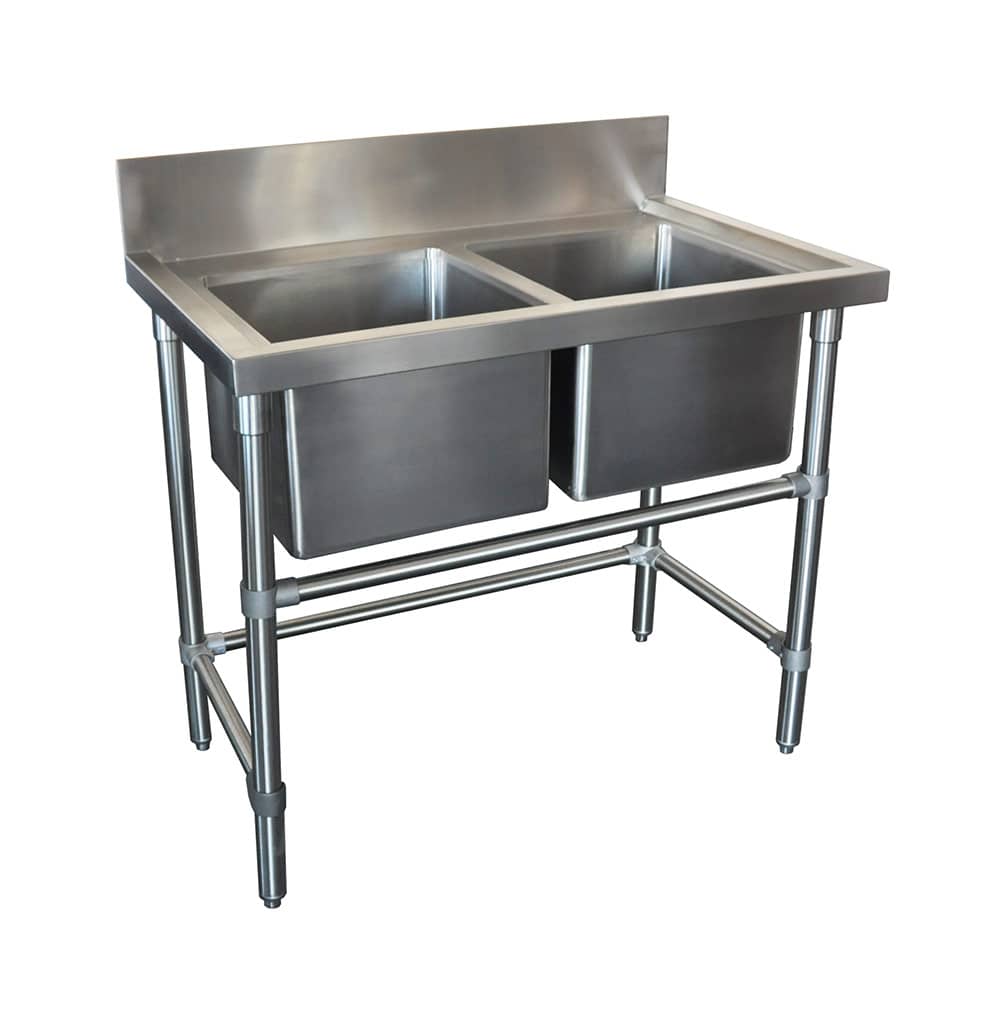
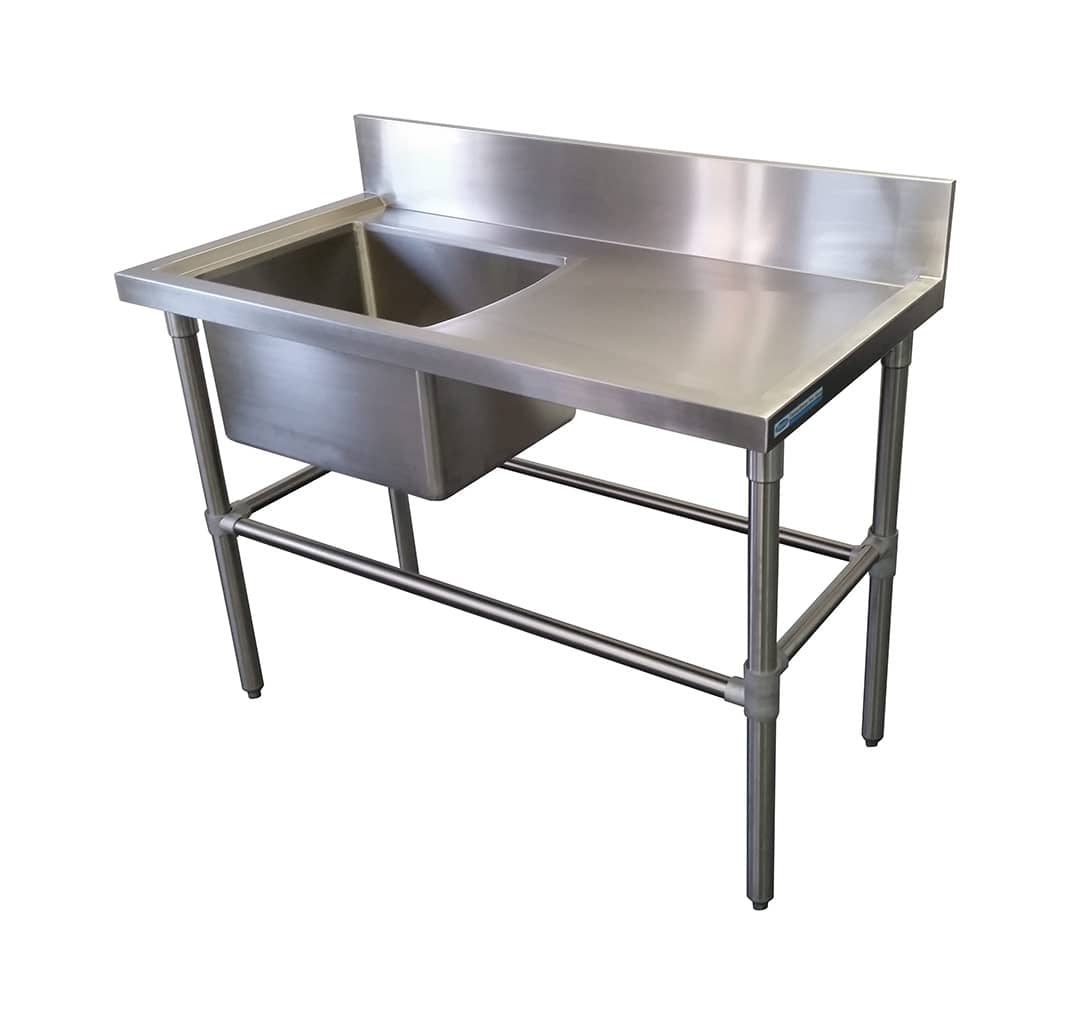
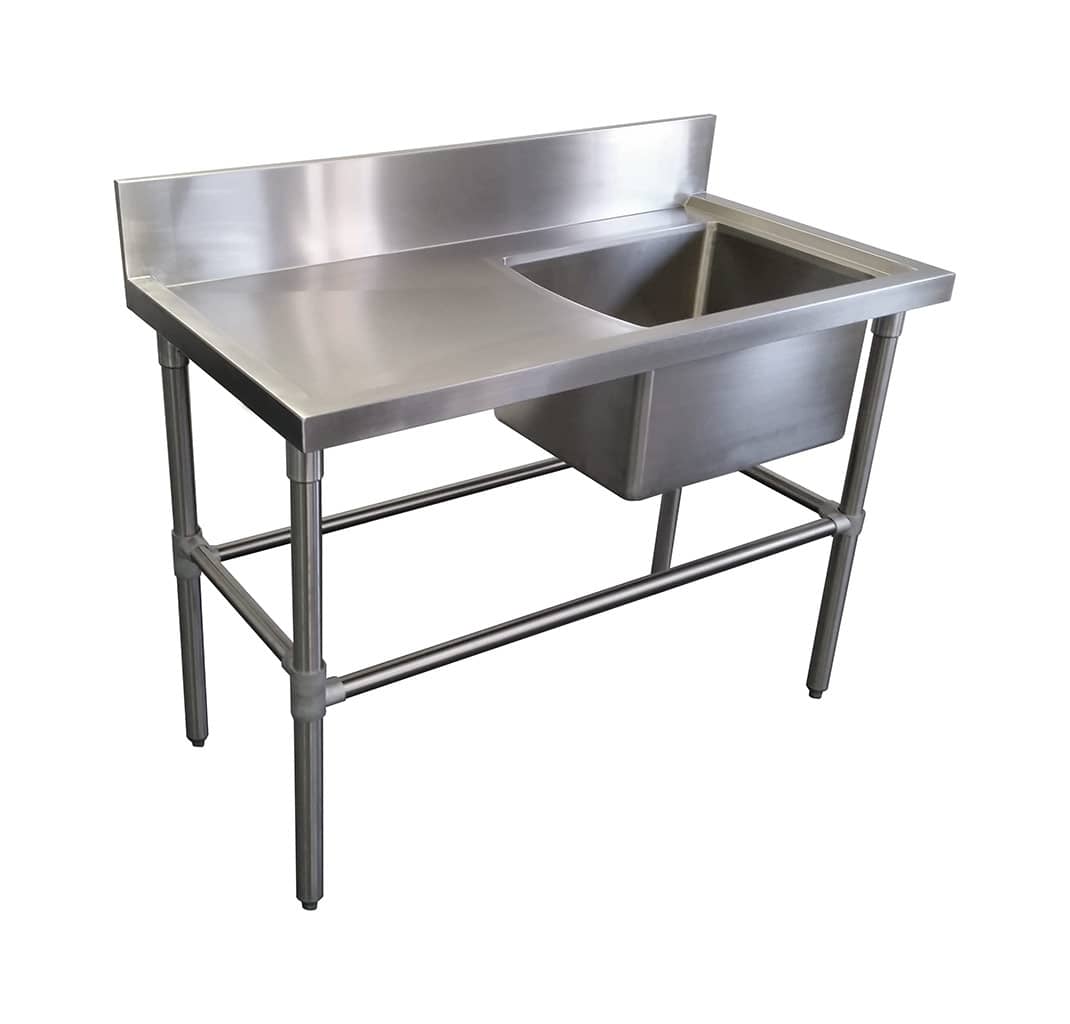
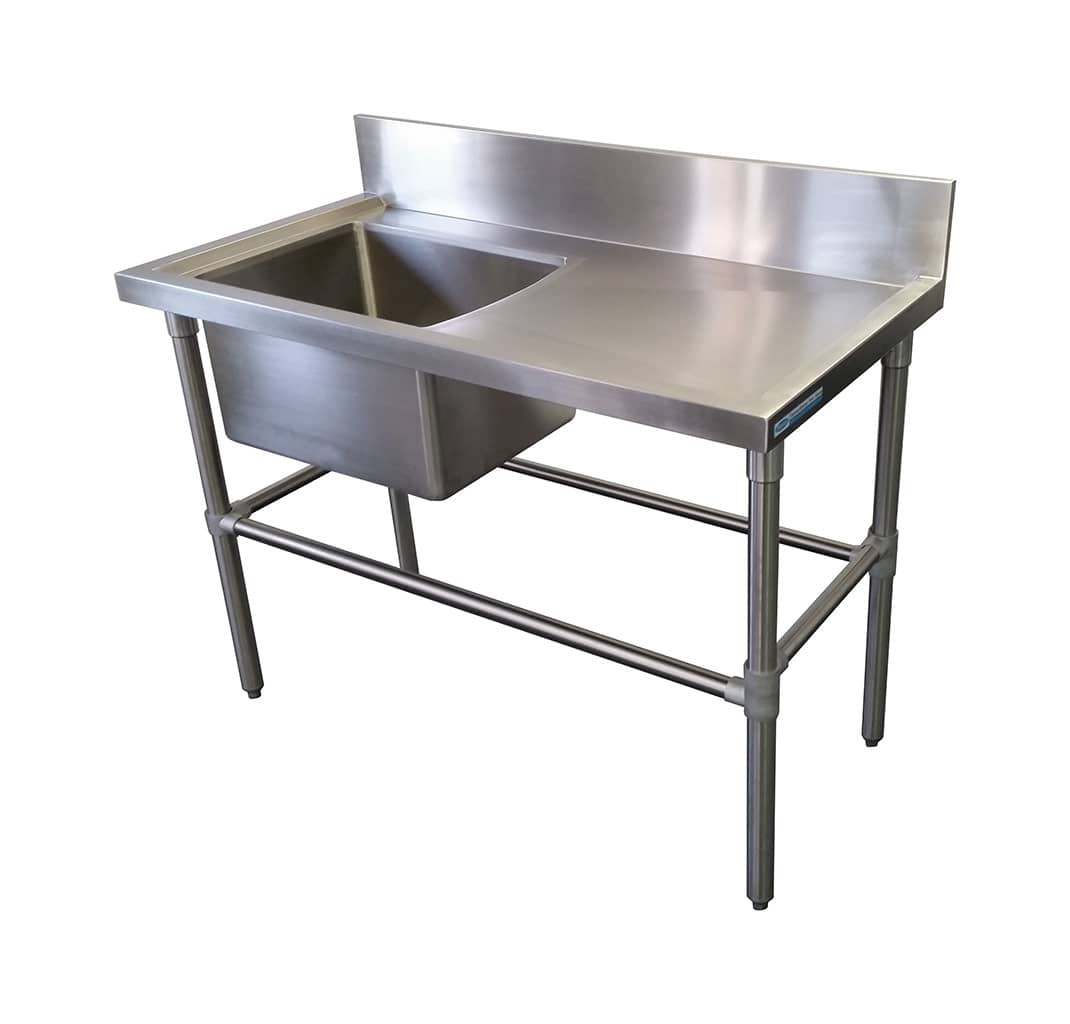

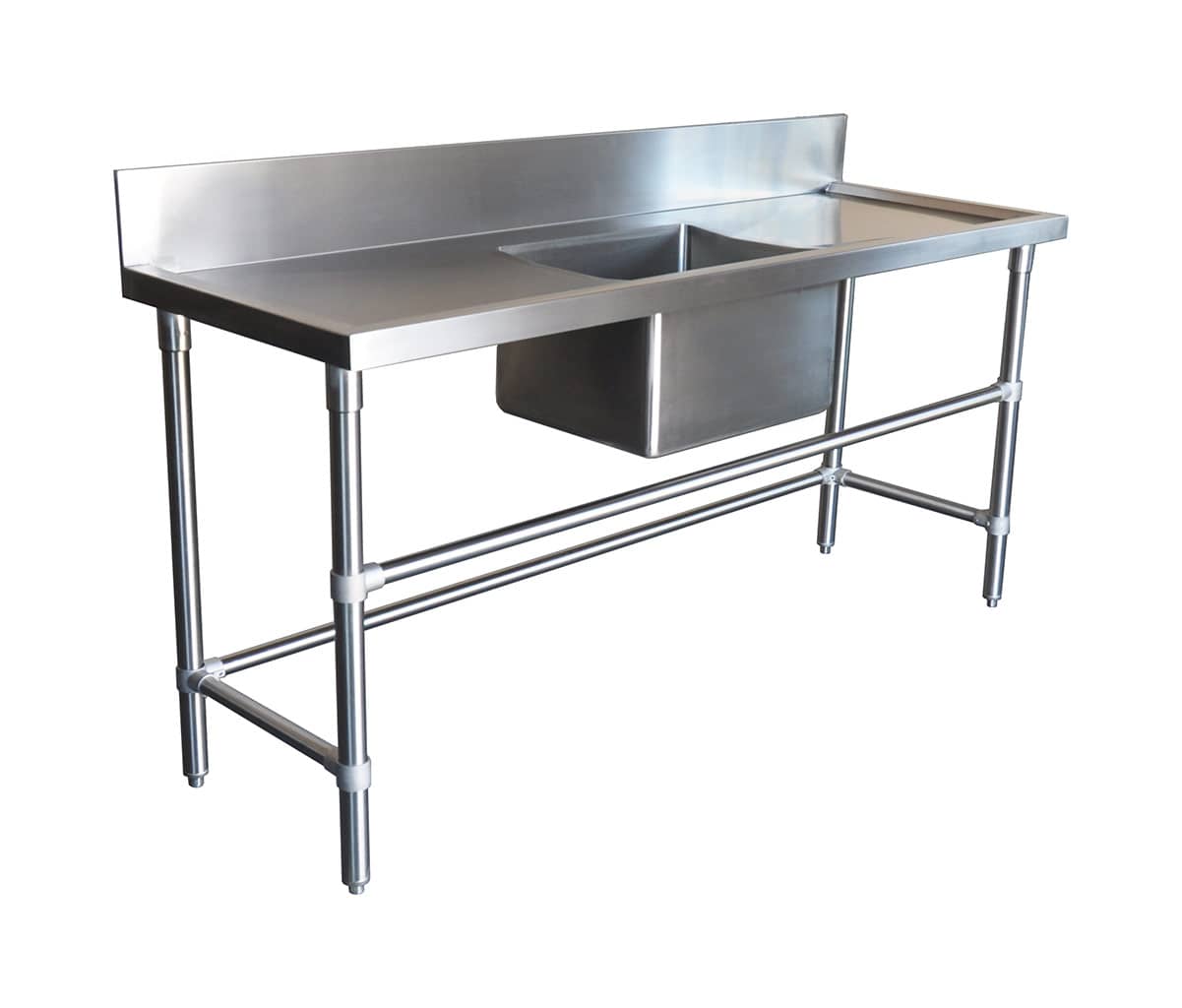
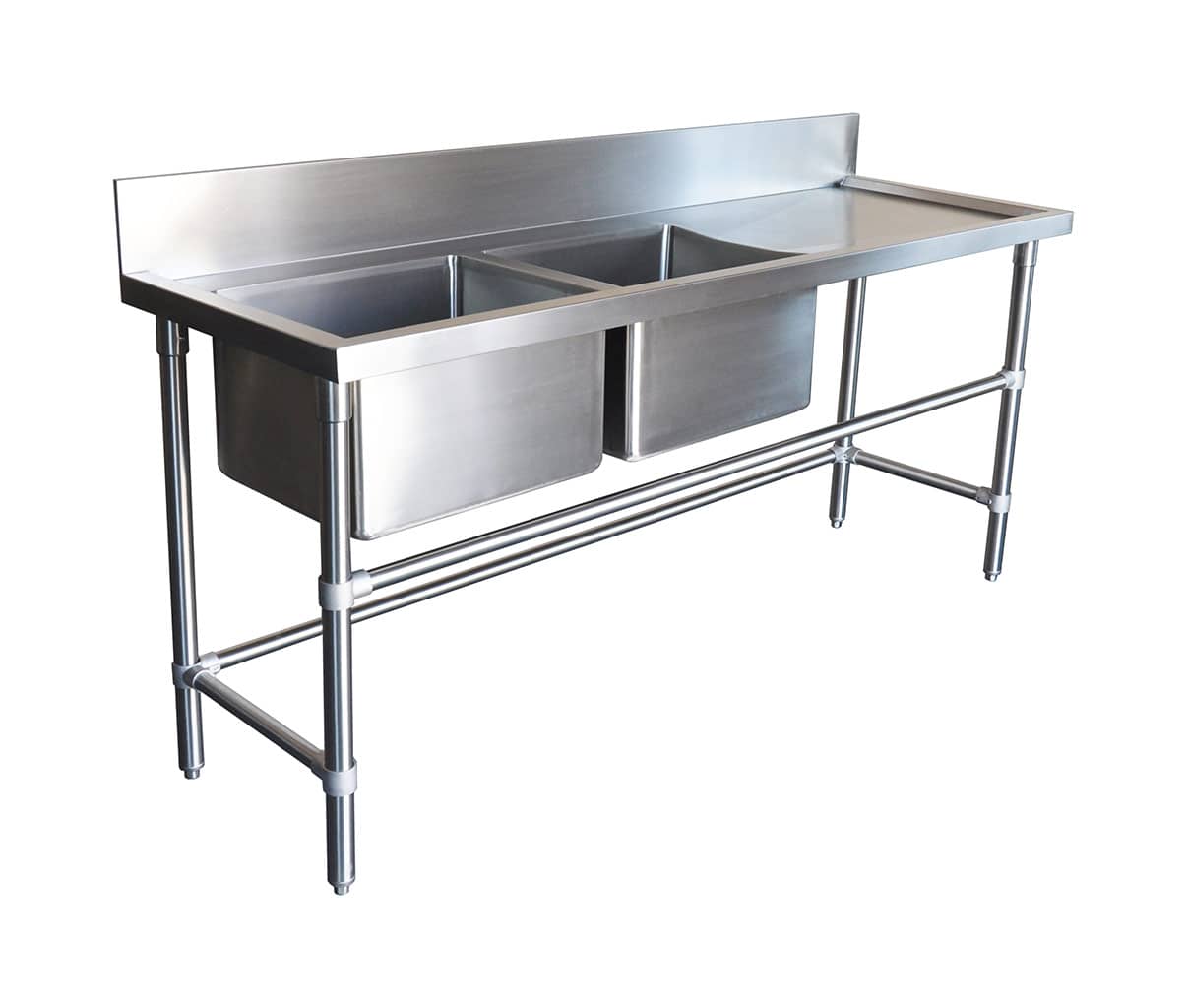

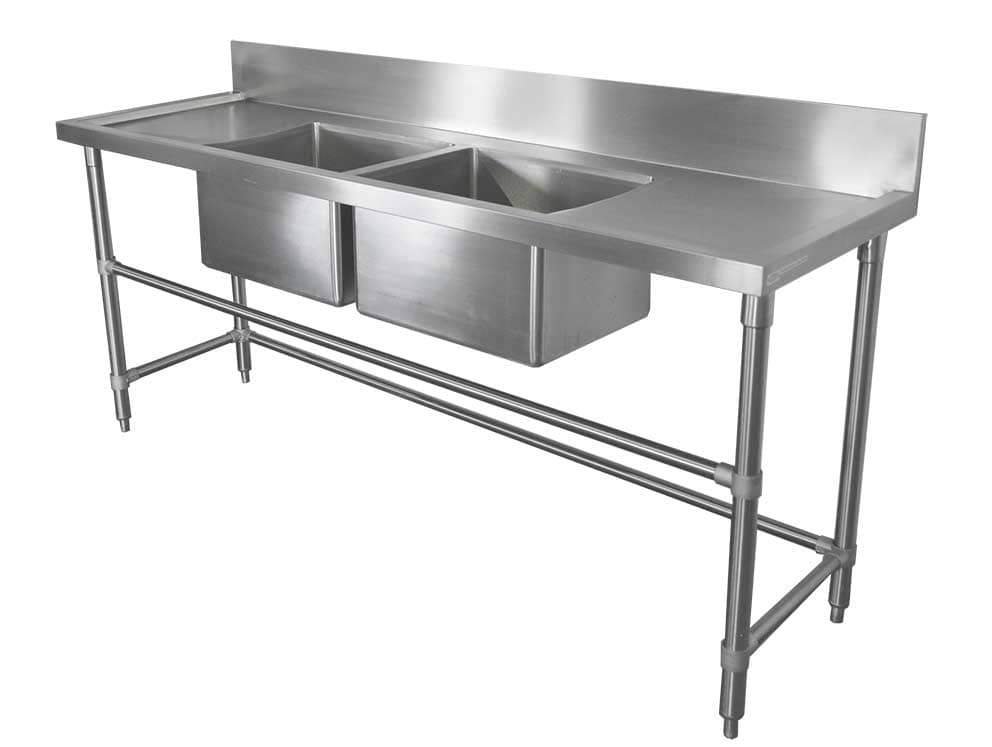
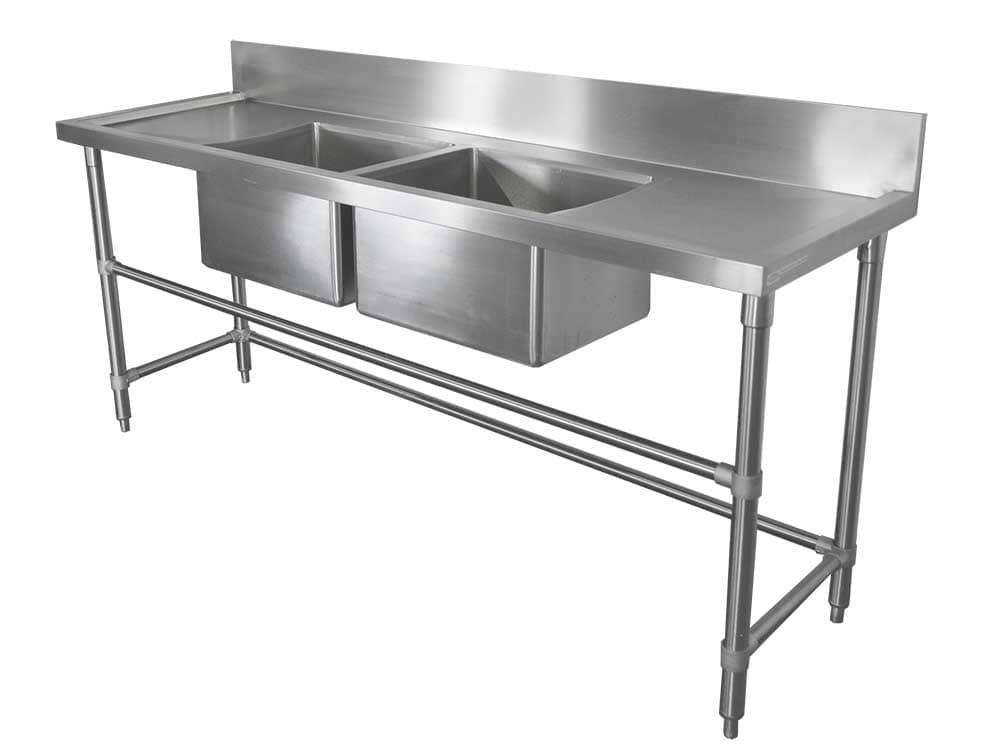
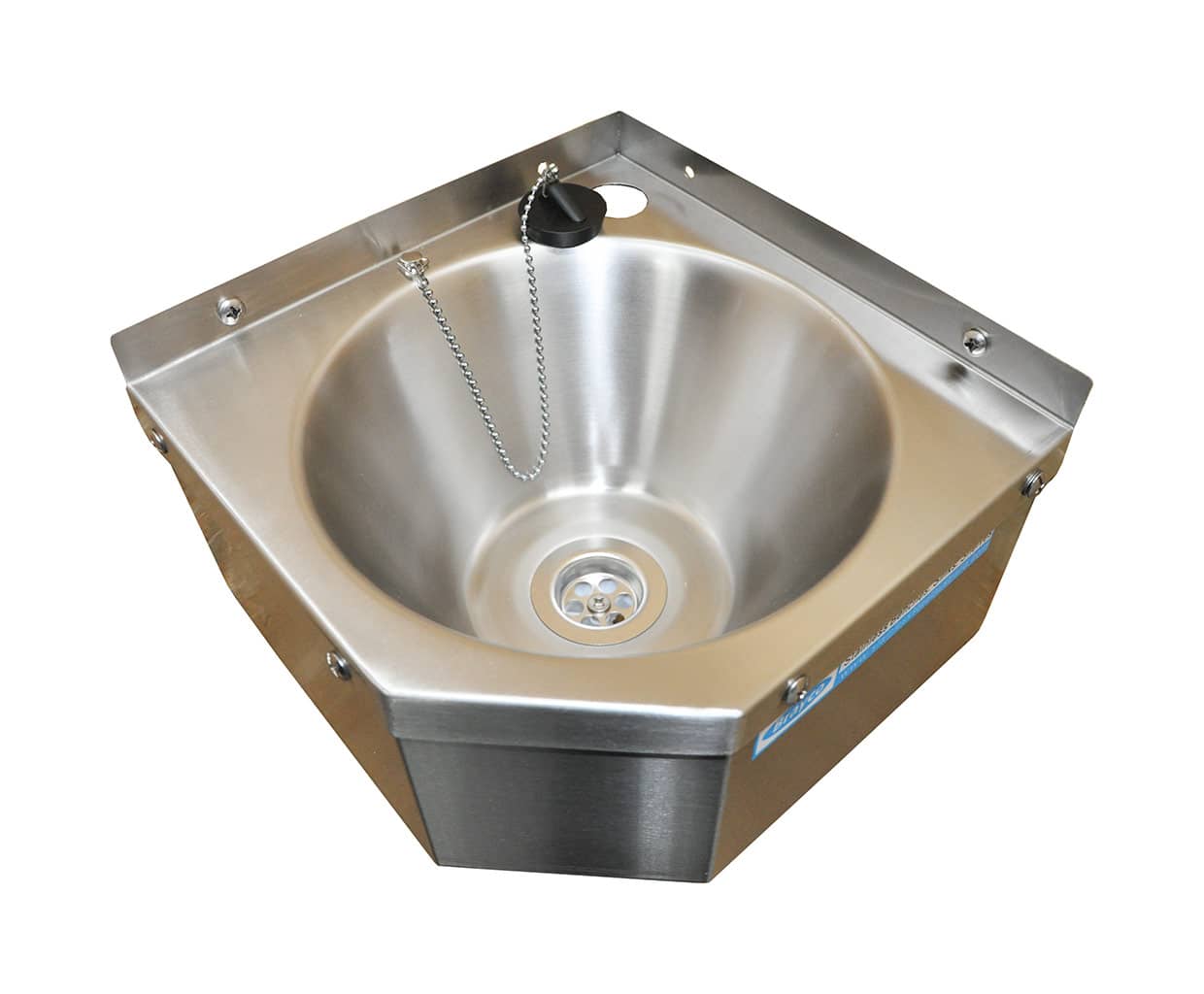
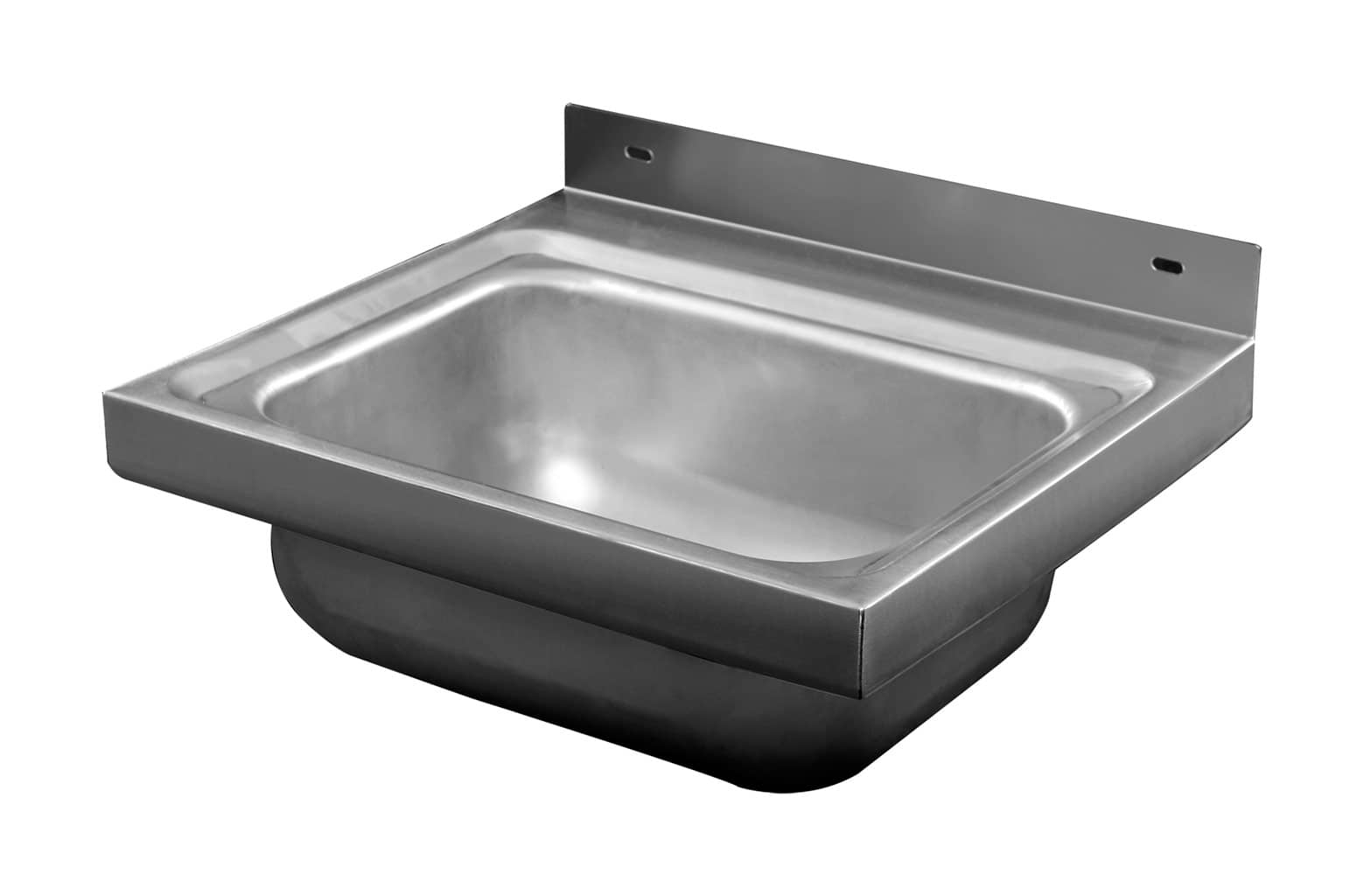
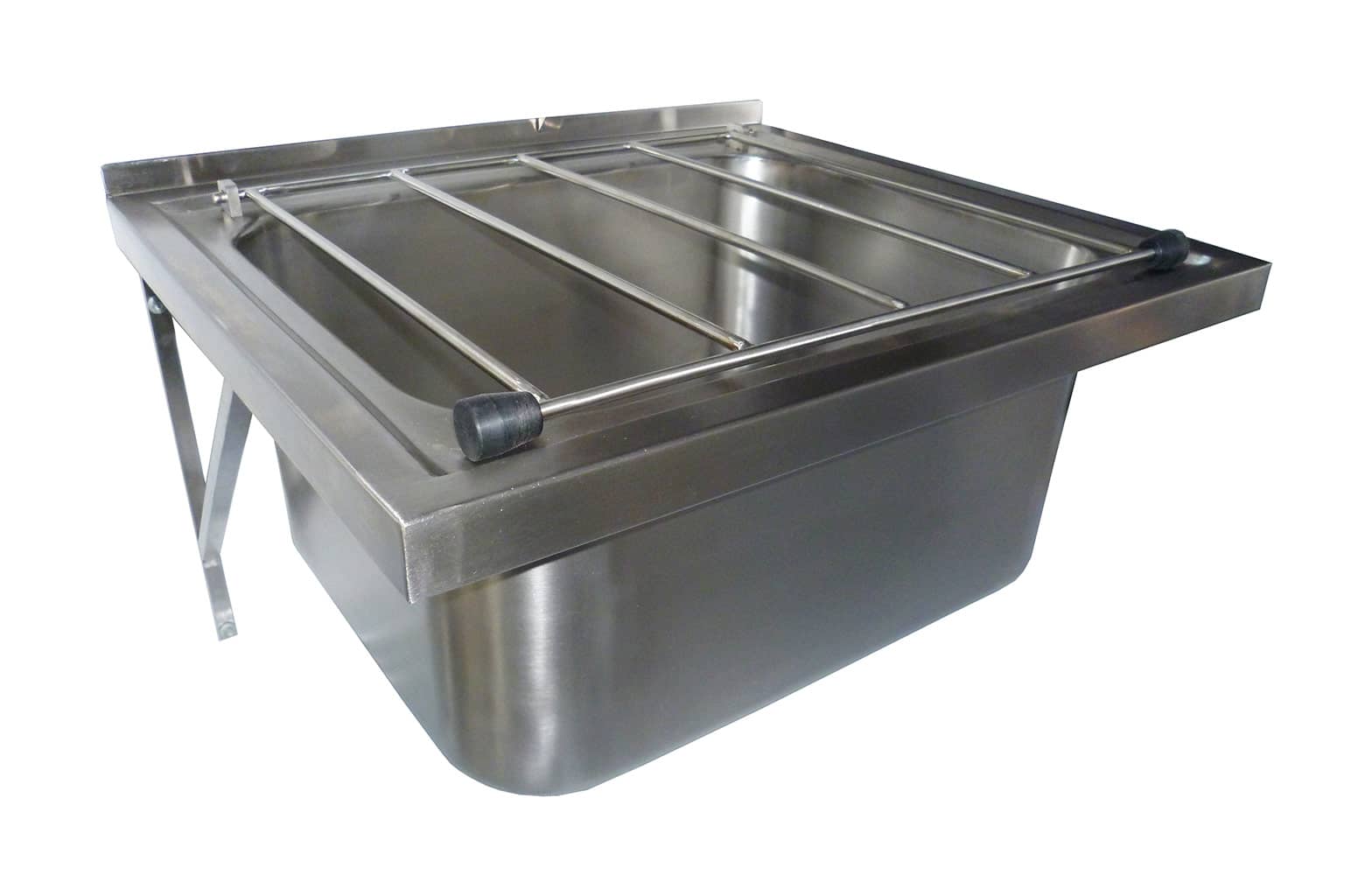
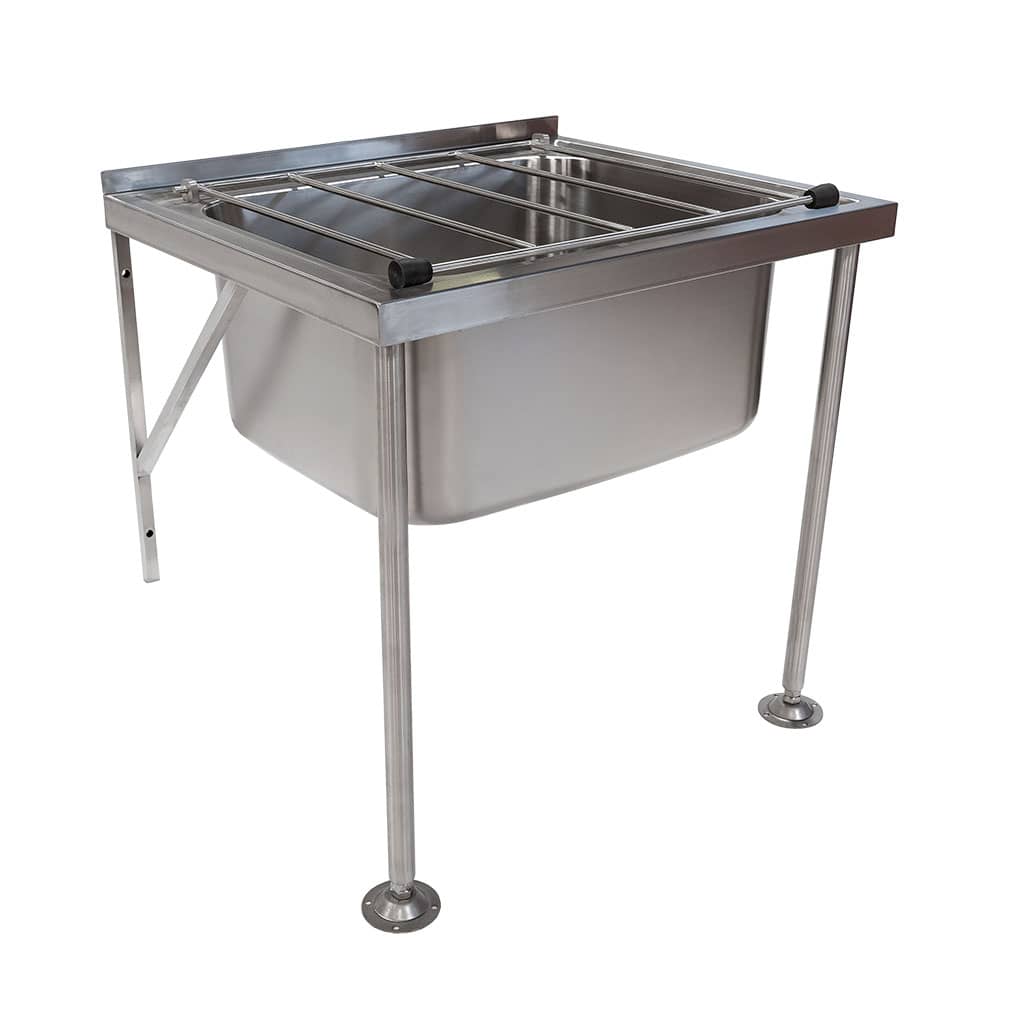
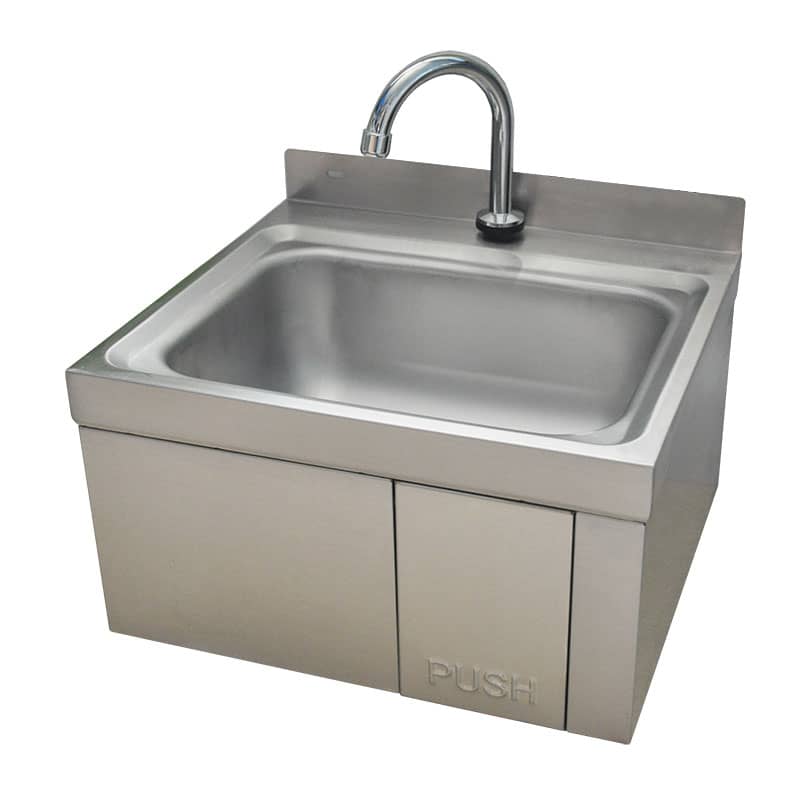
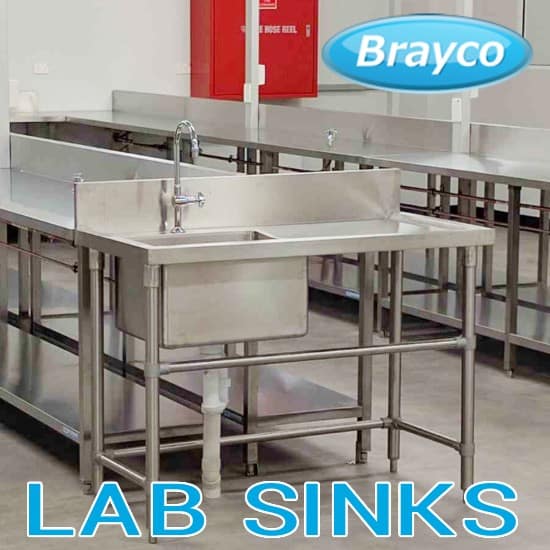
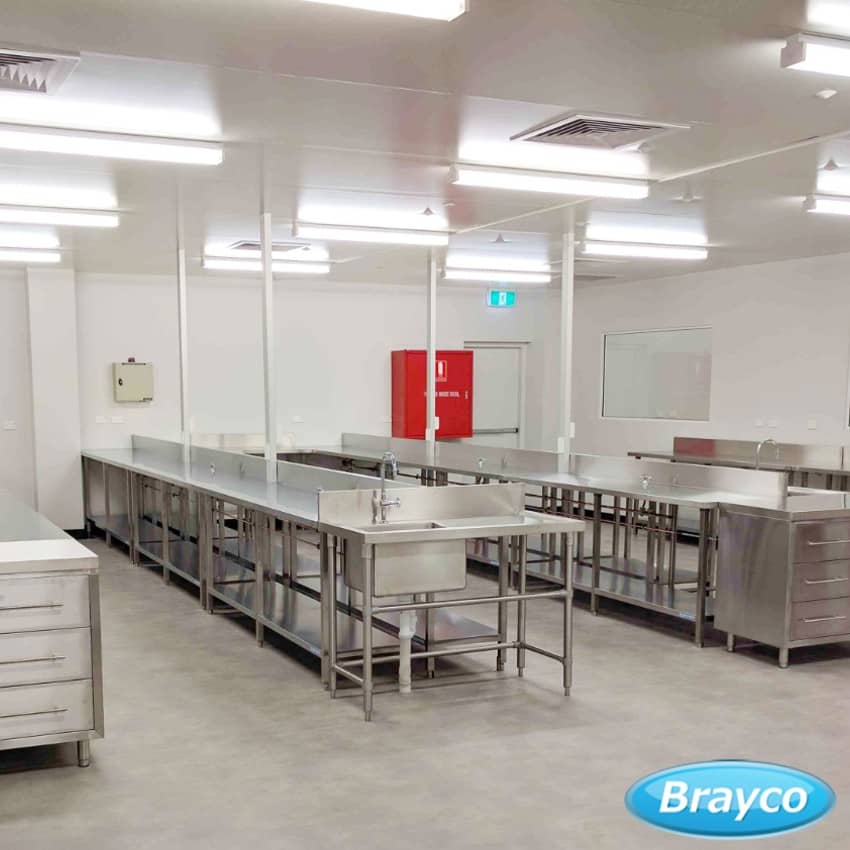











 Across Australia & New Zealand
Across Australia & New Zealand